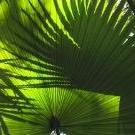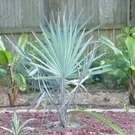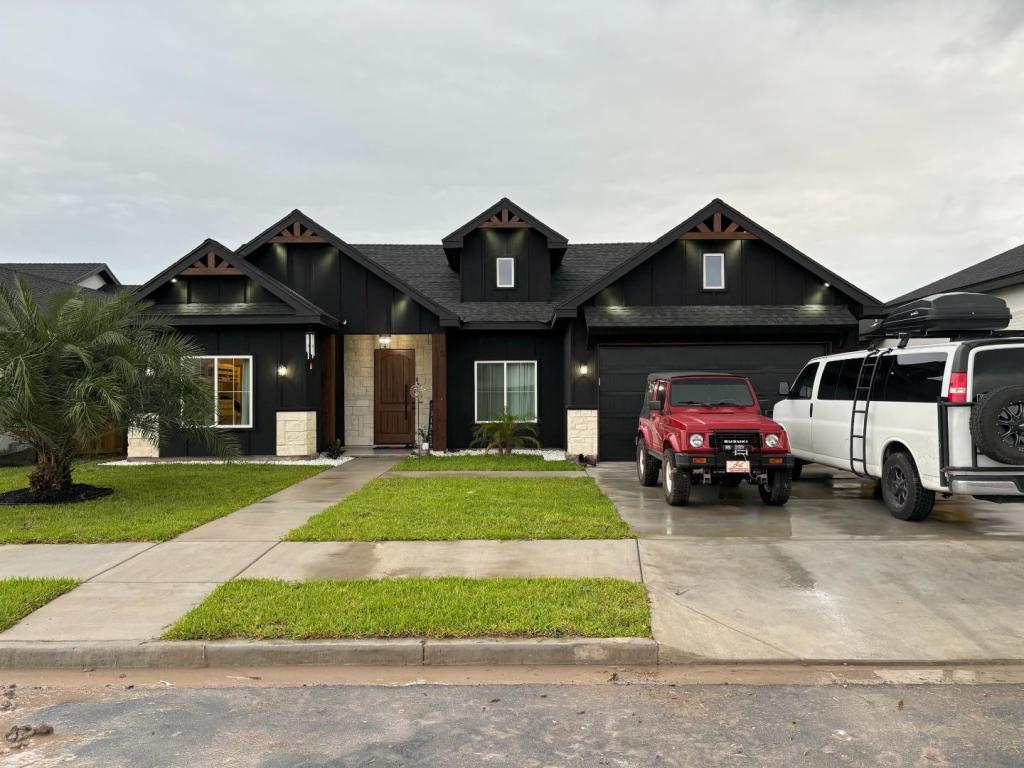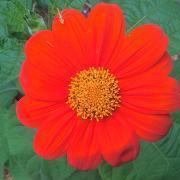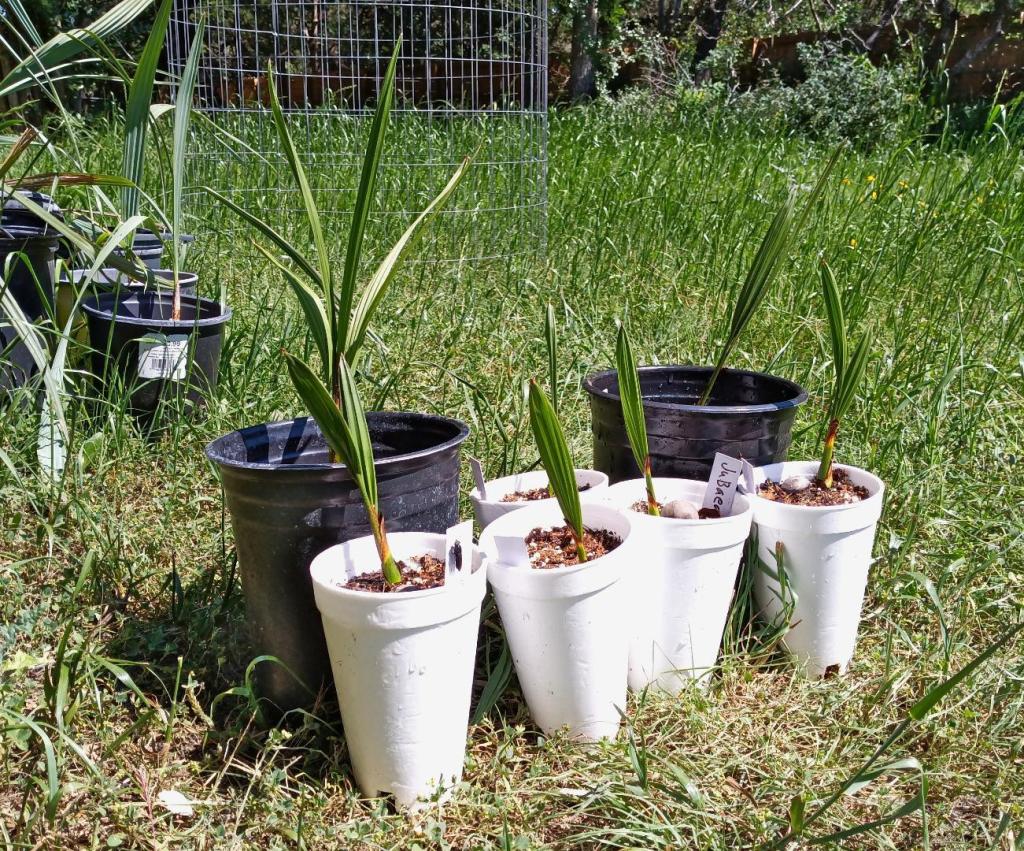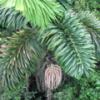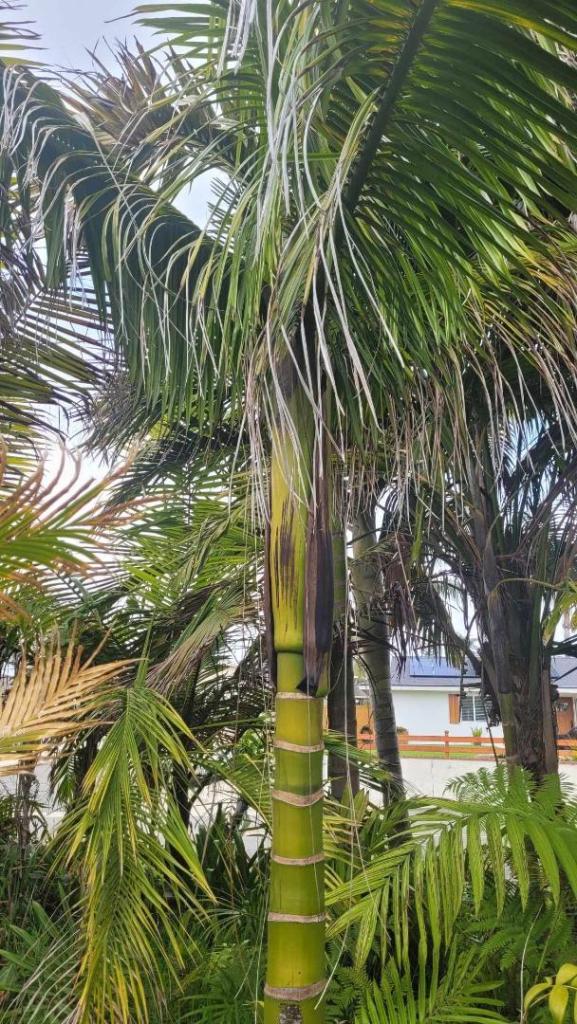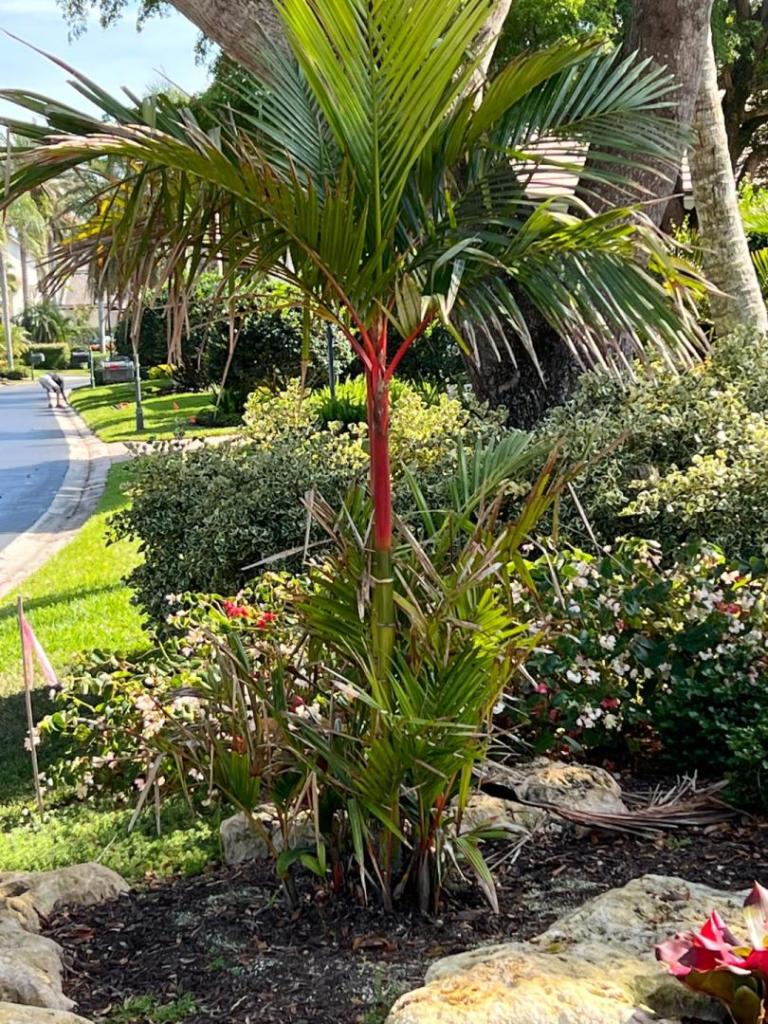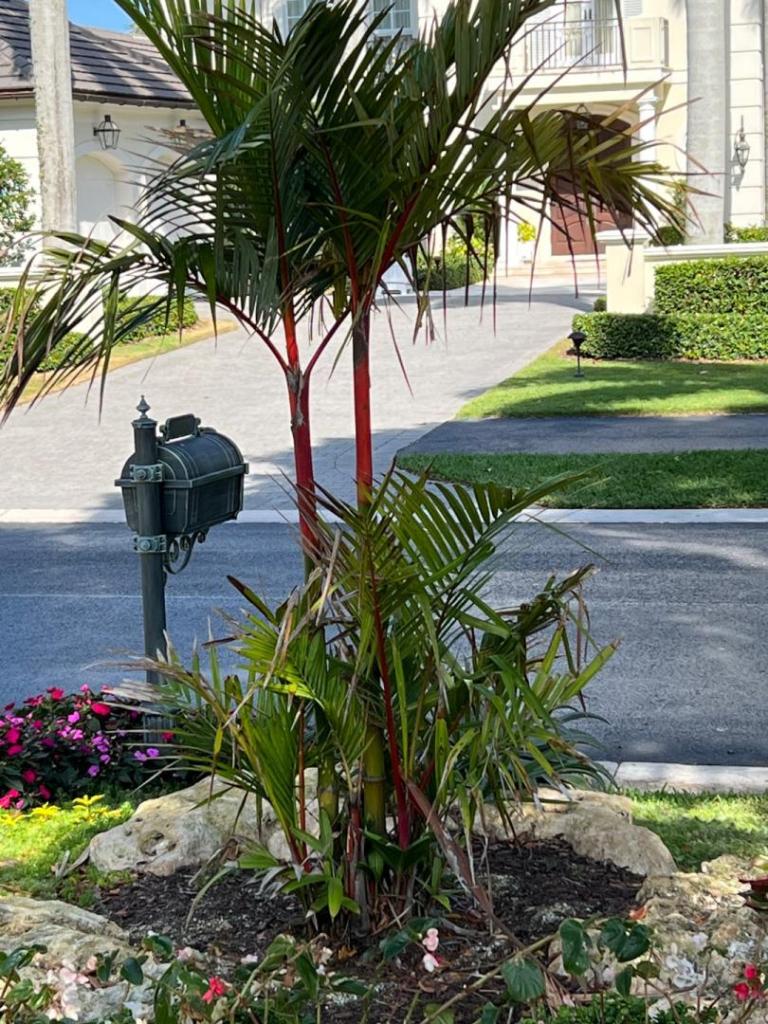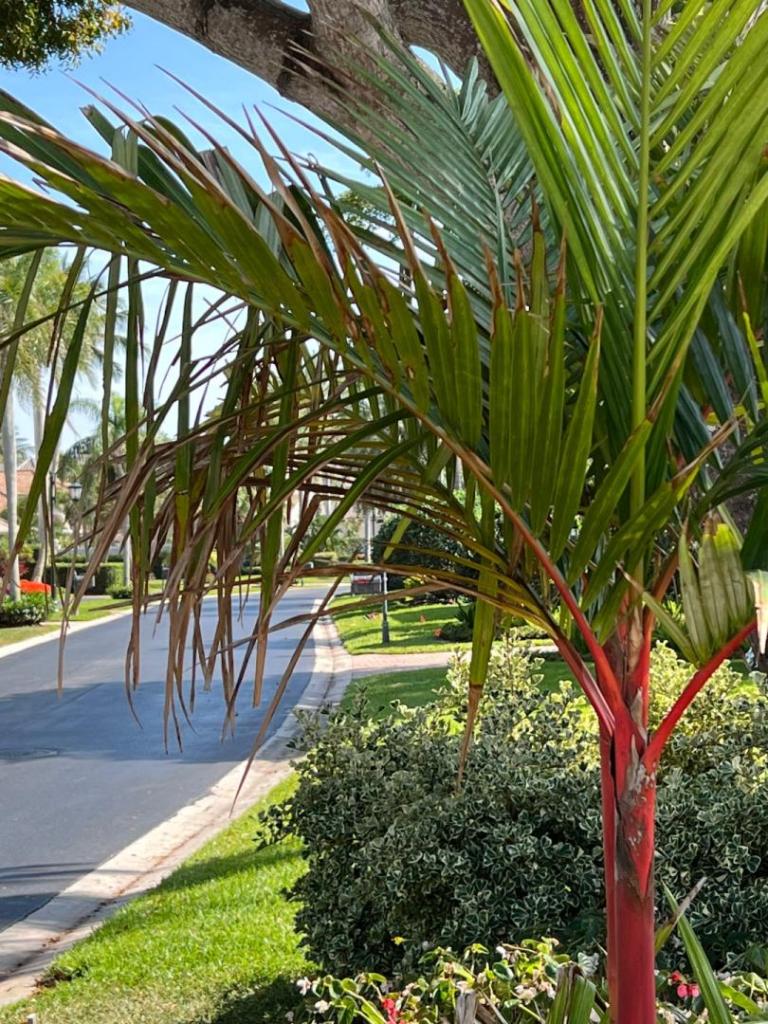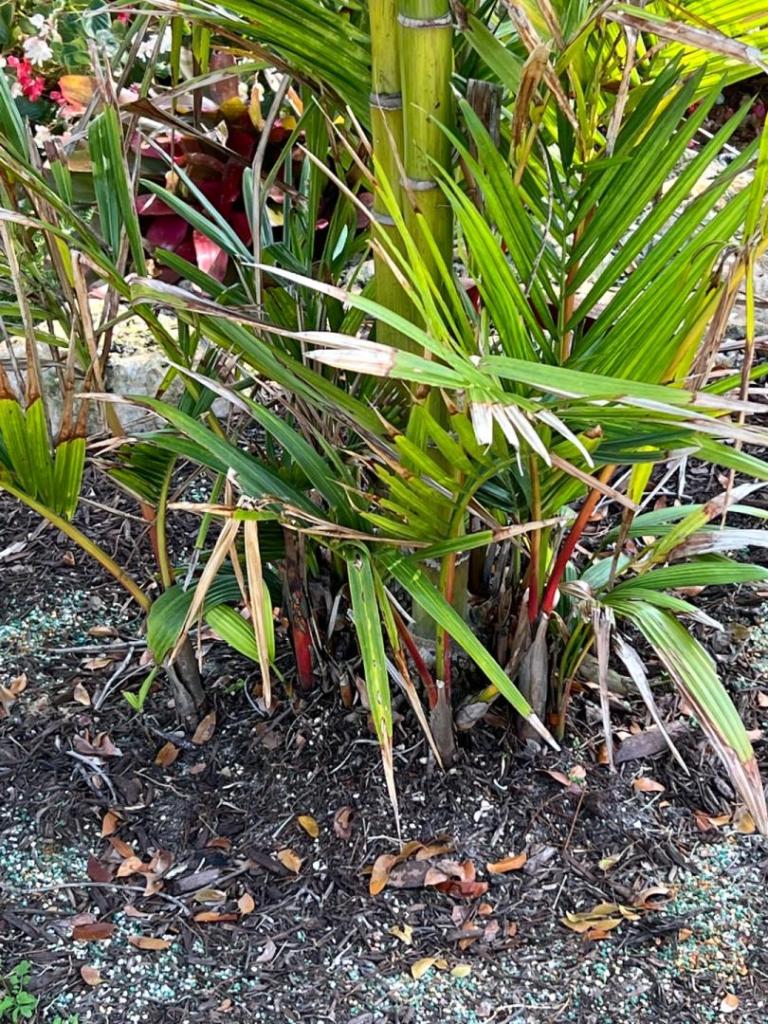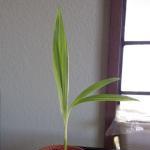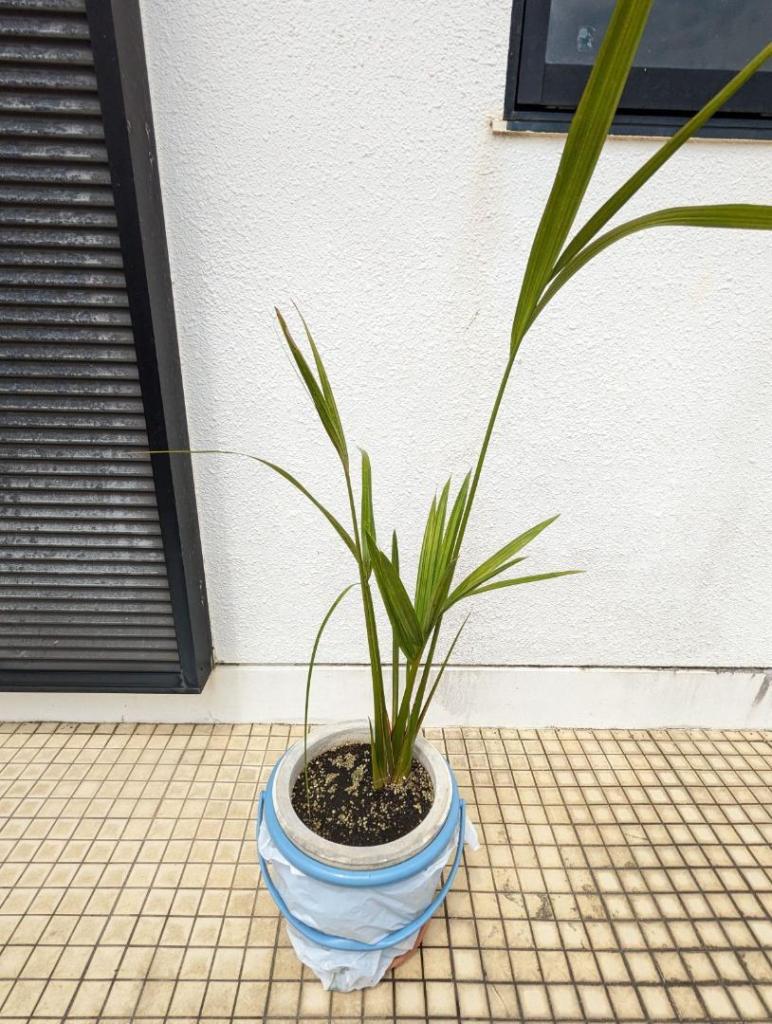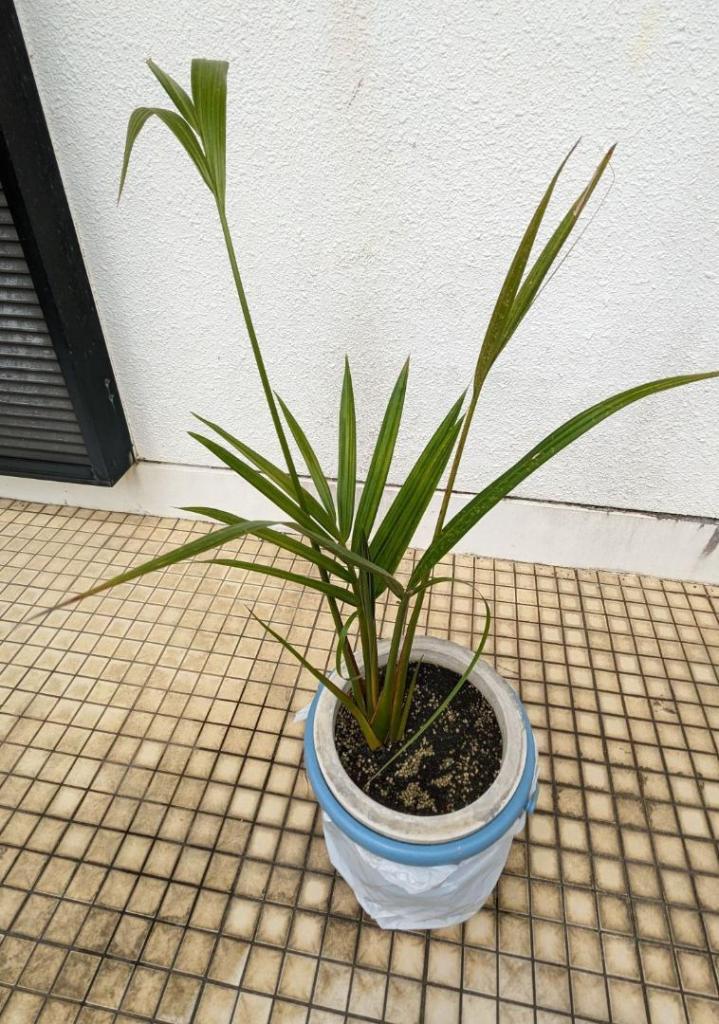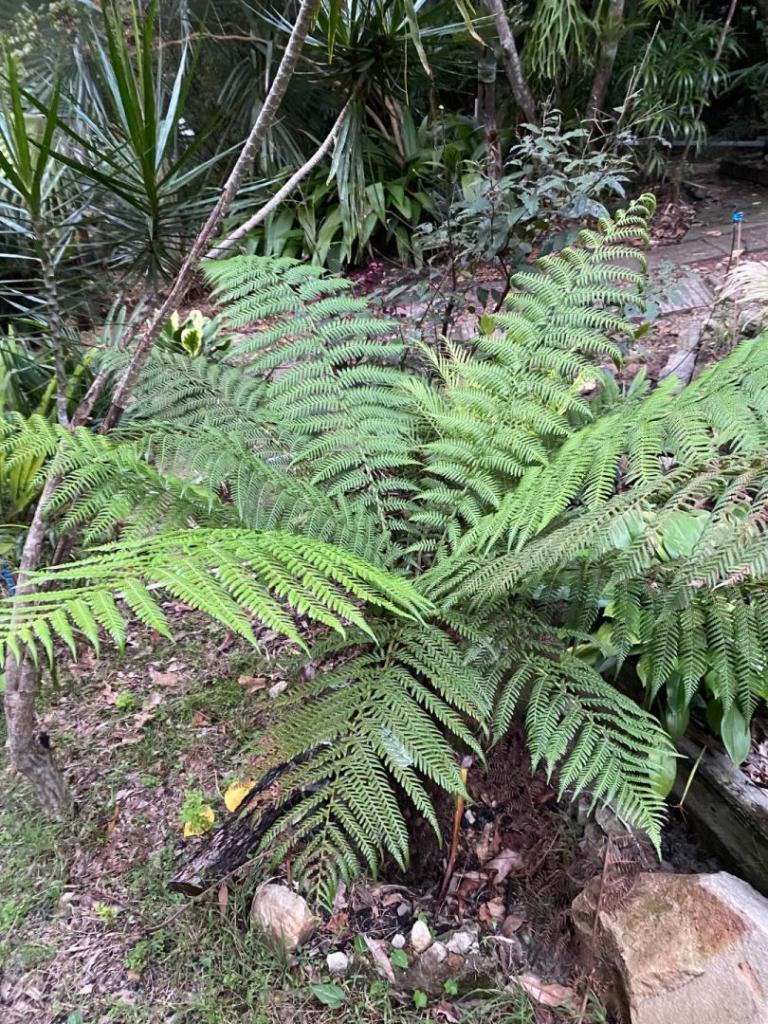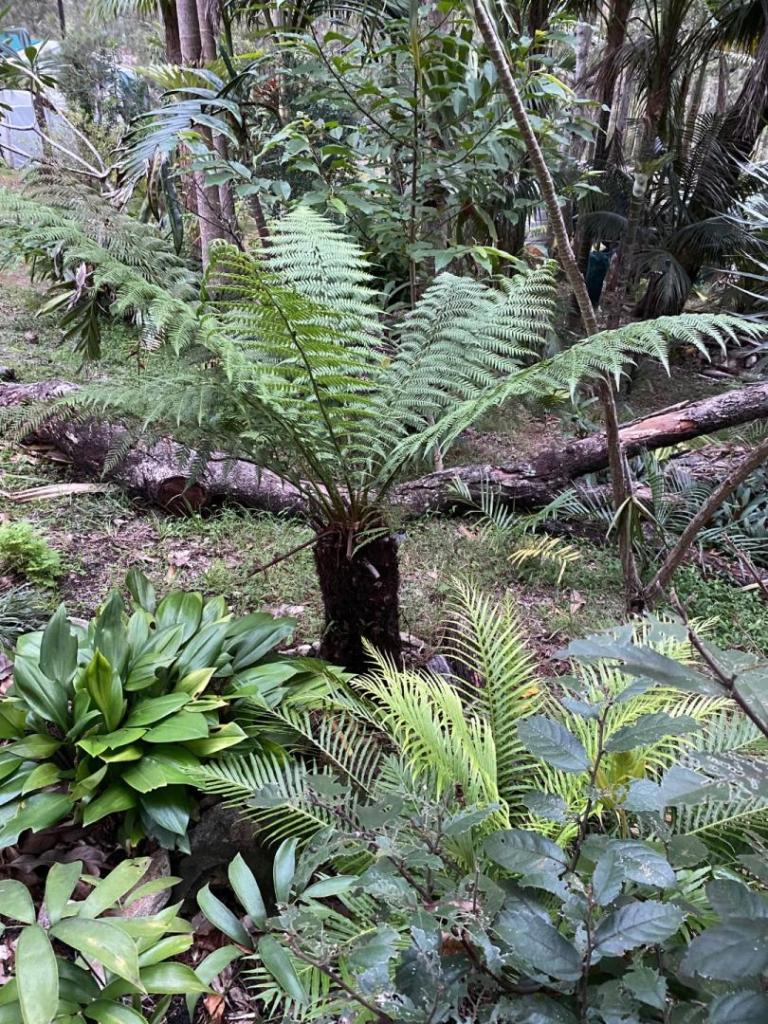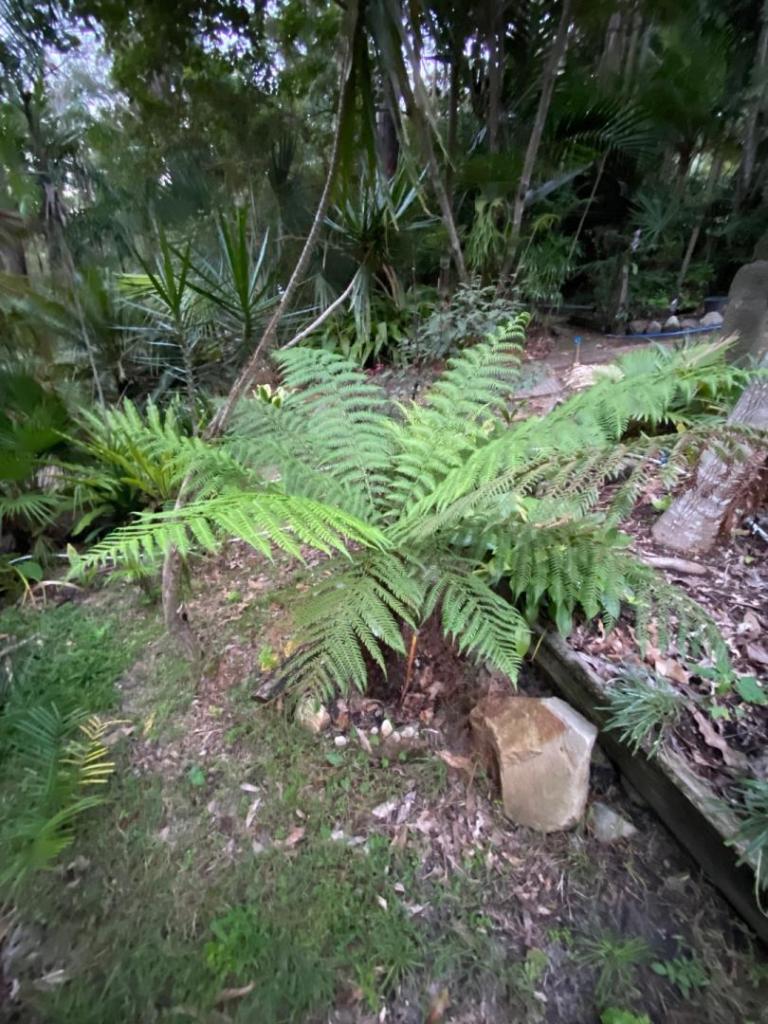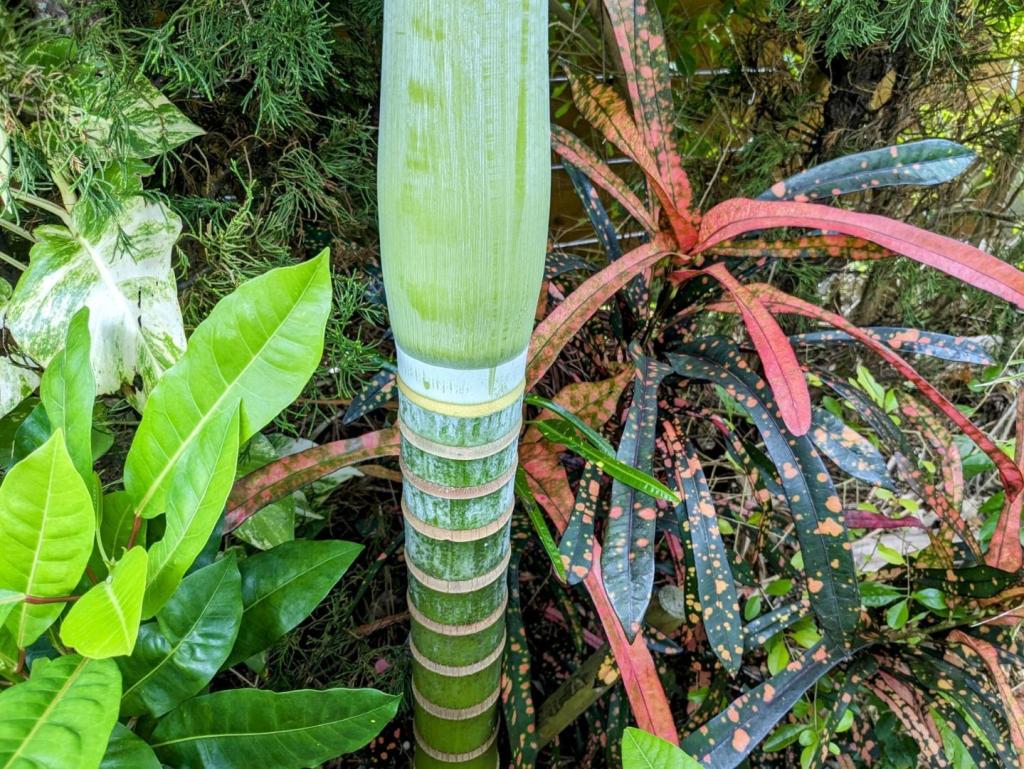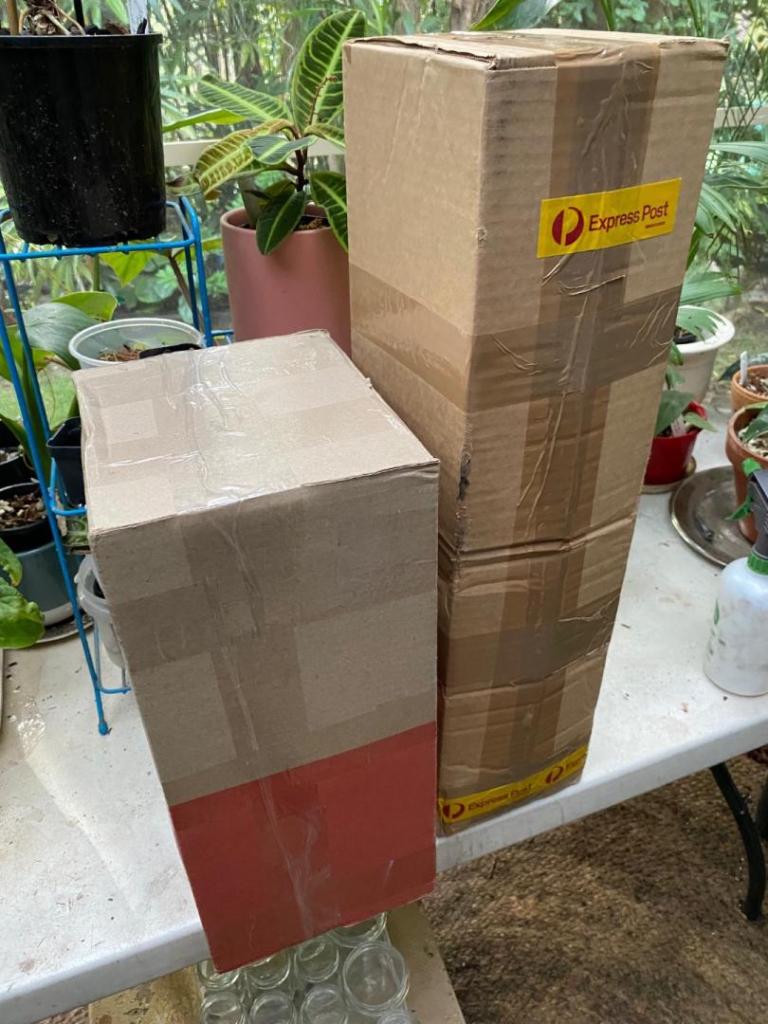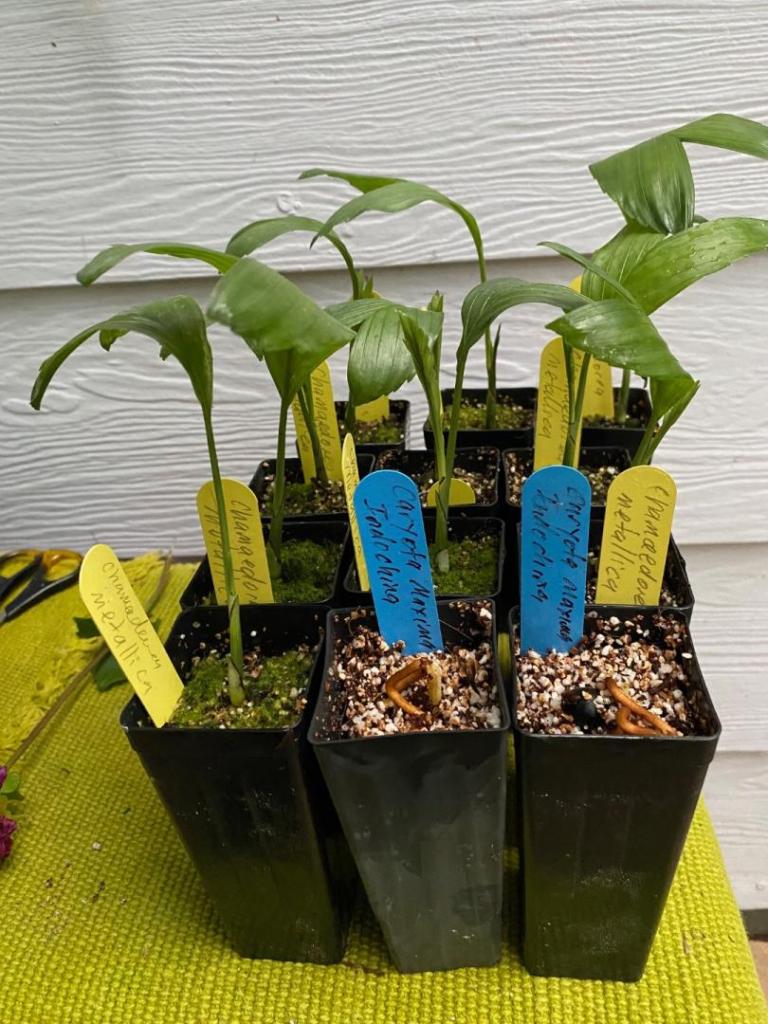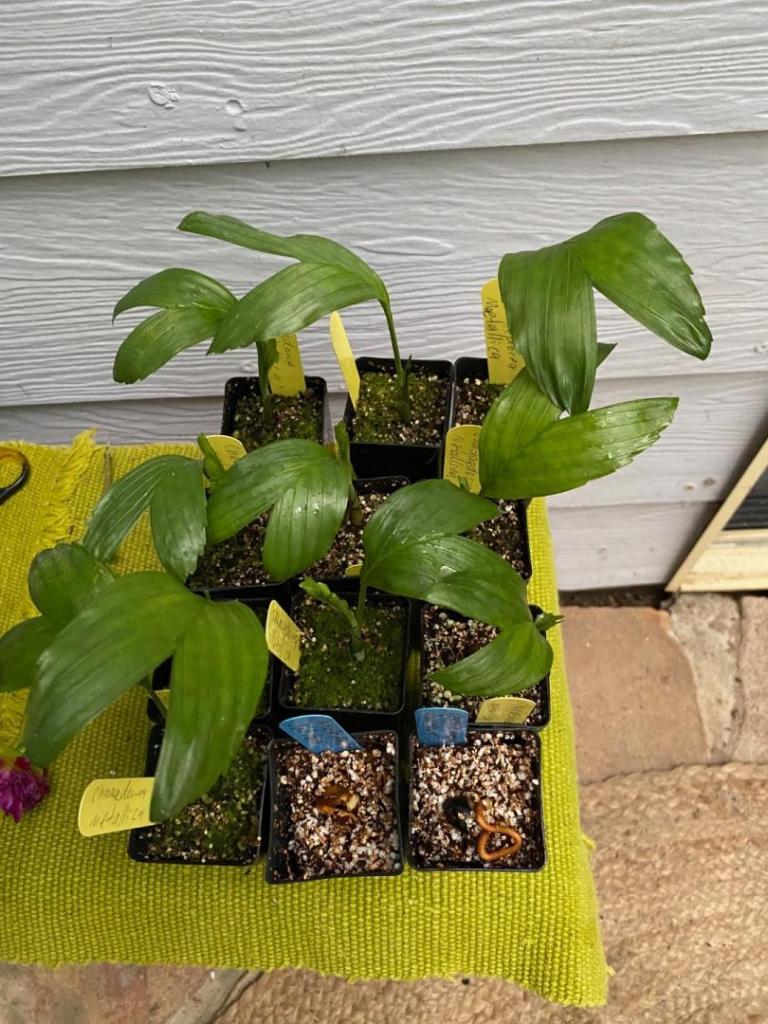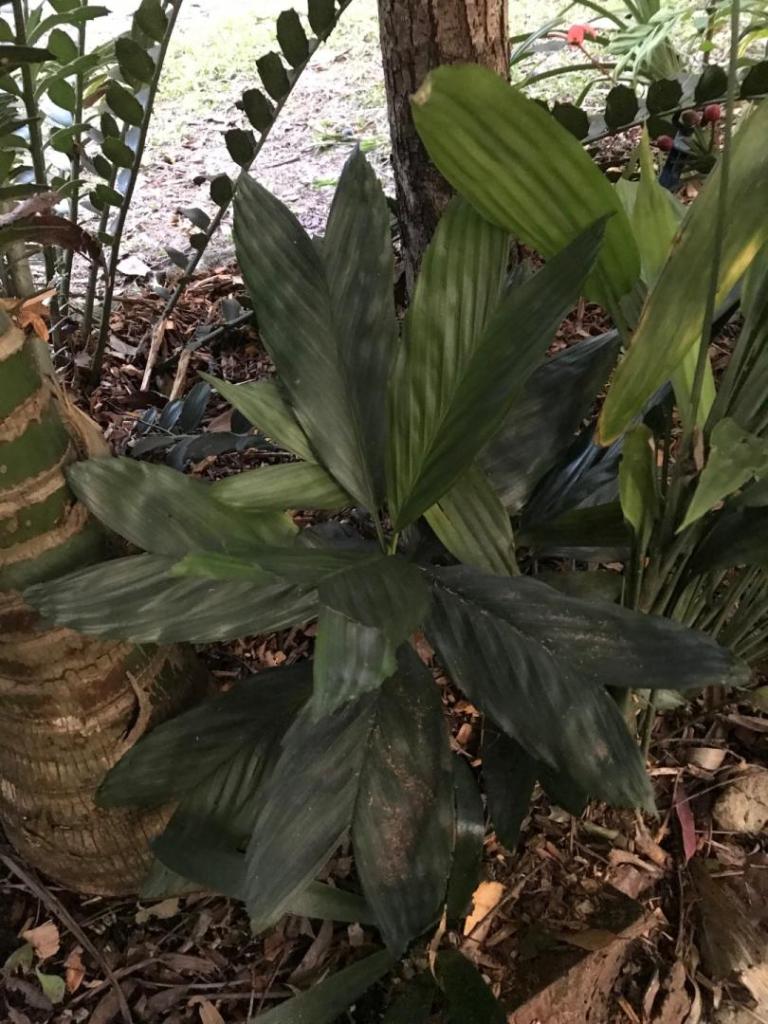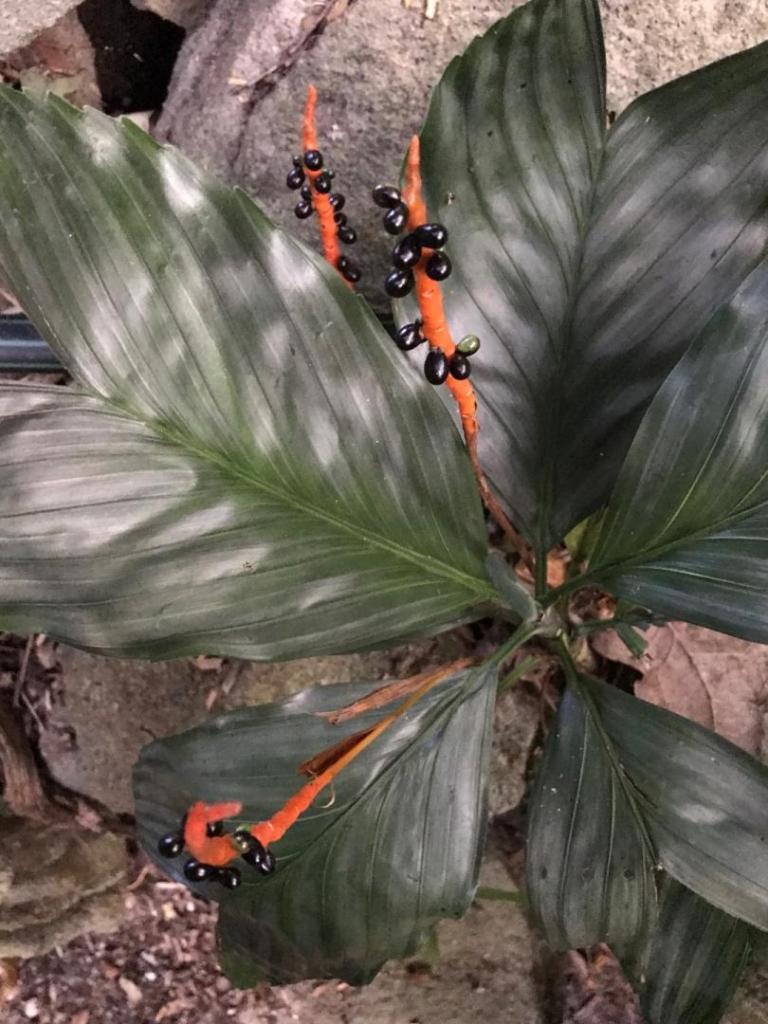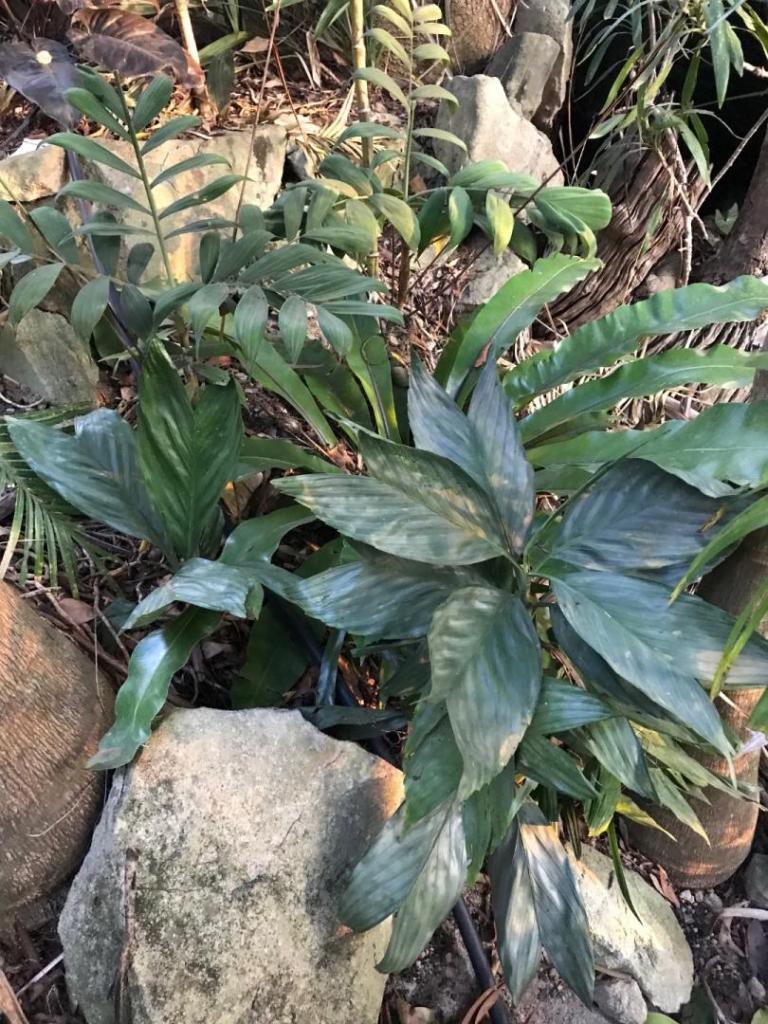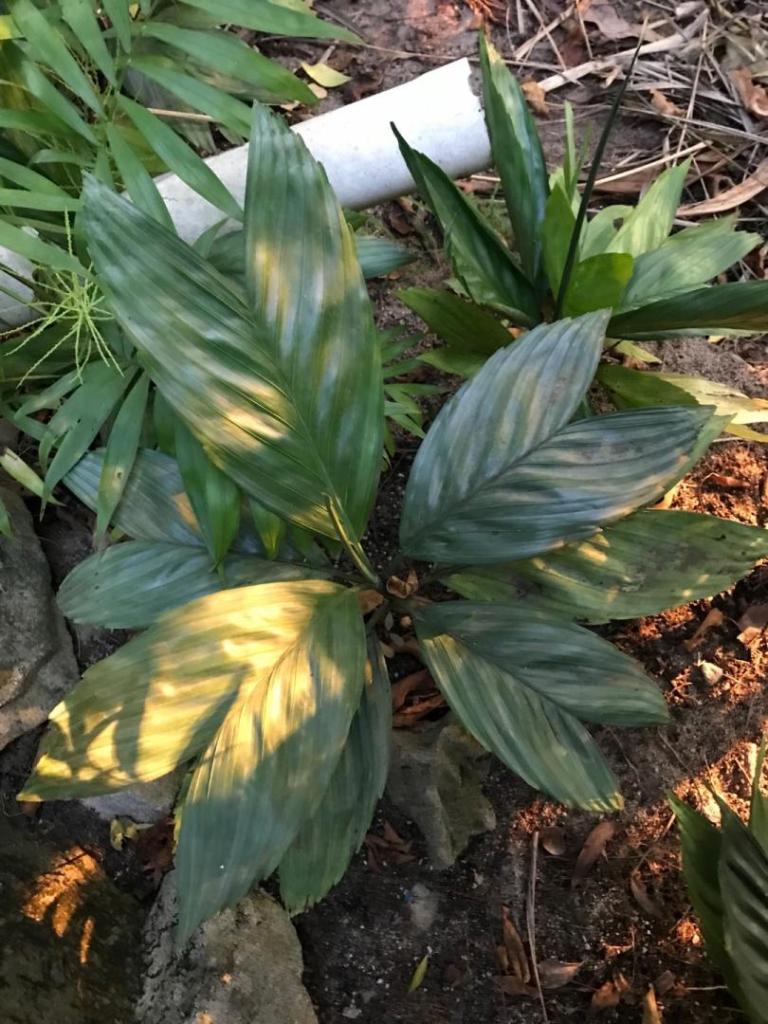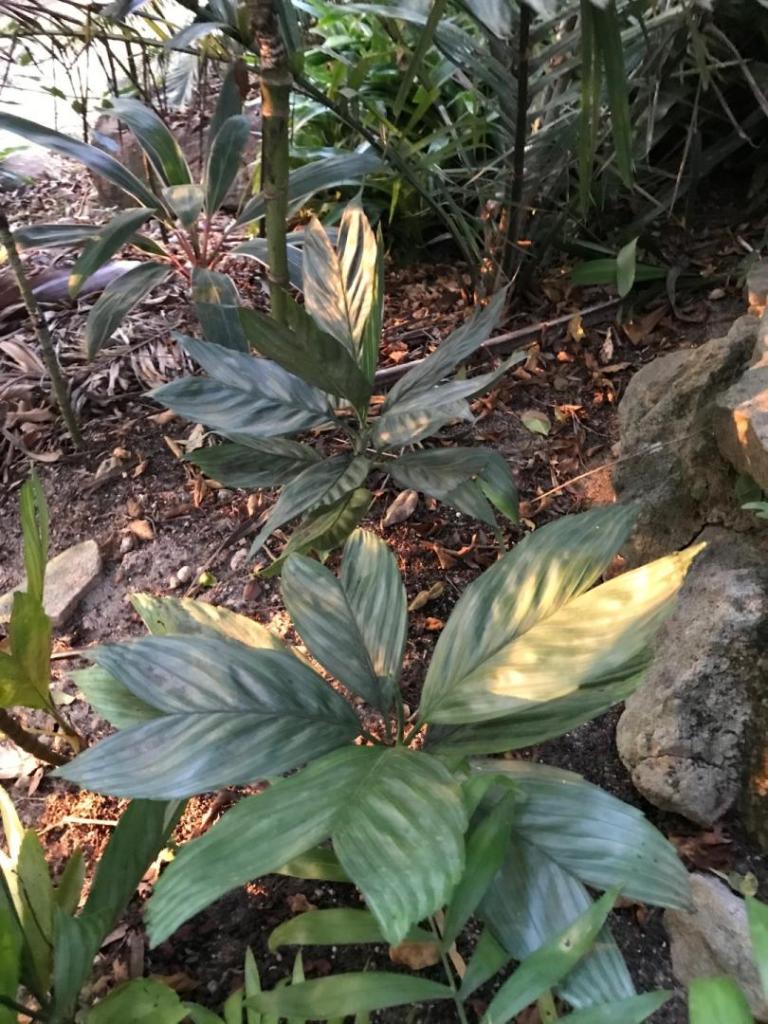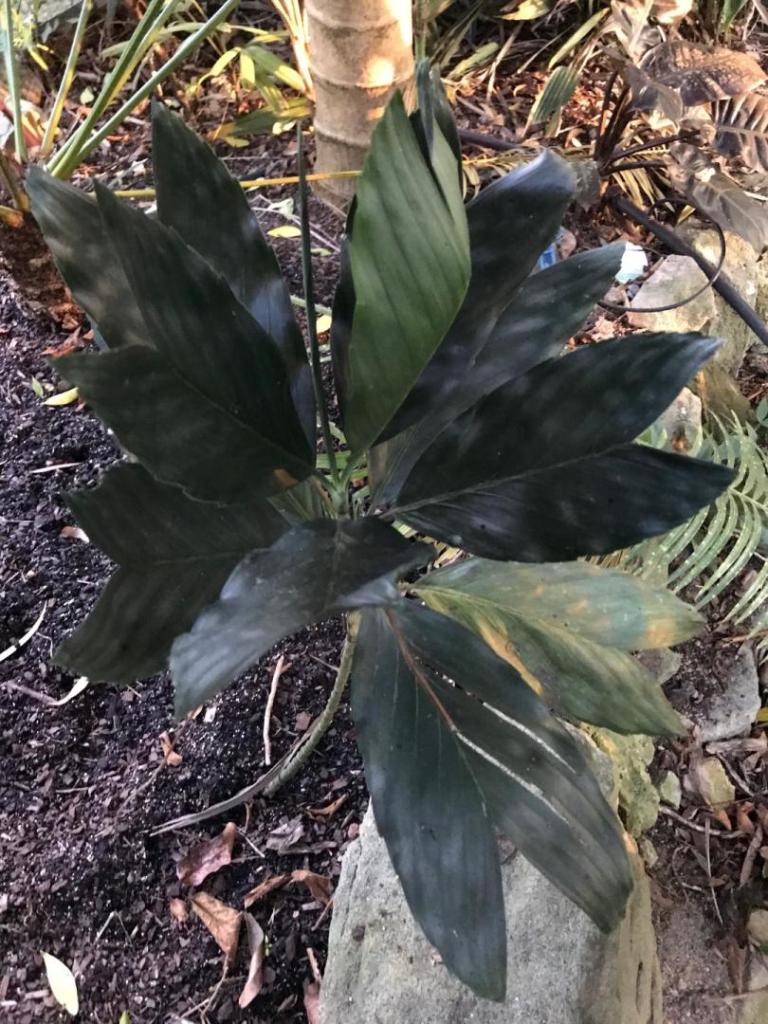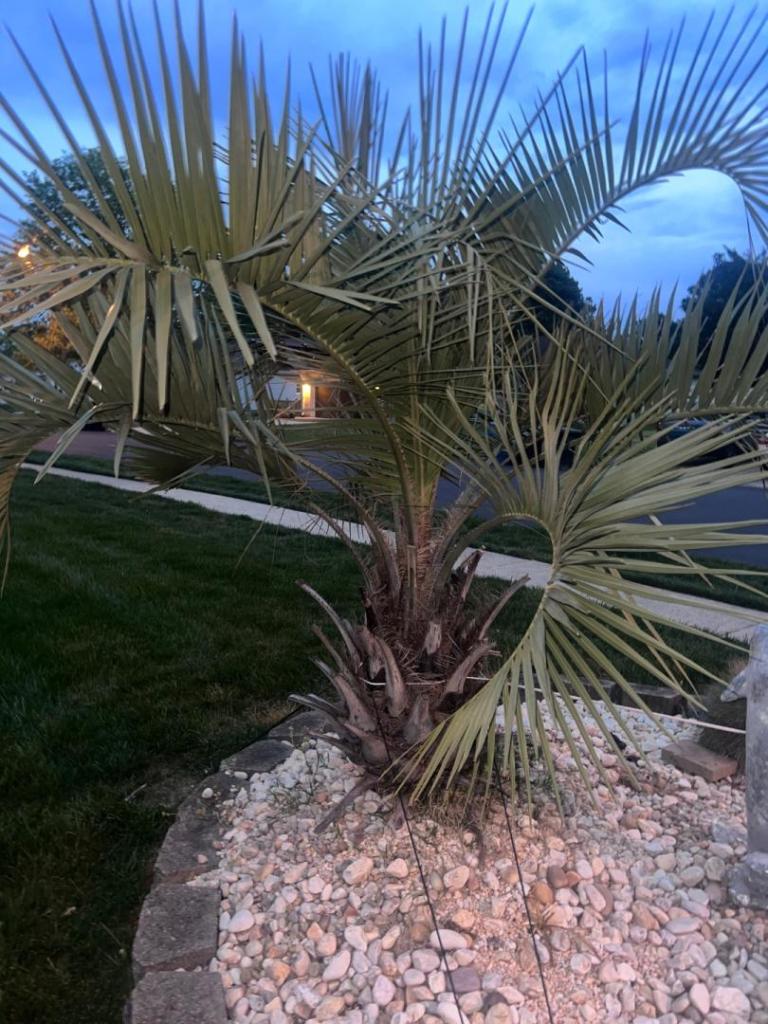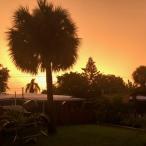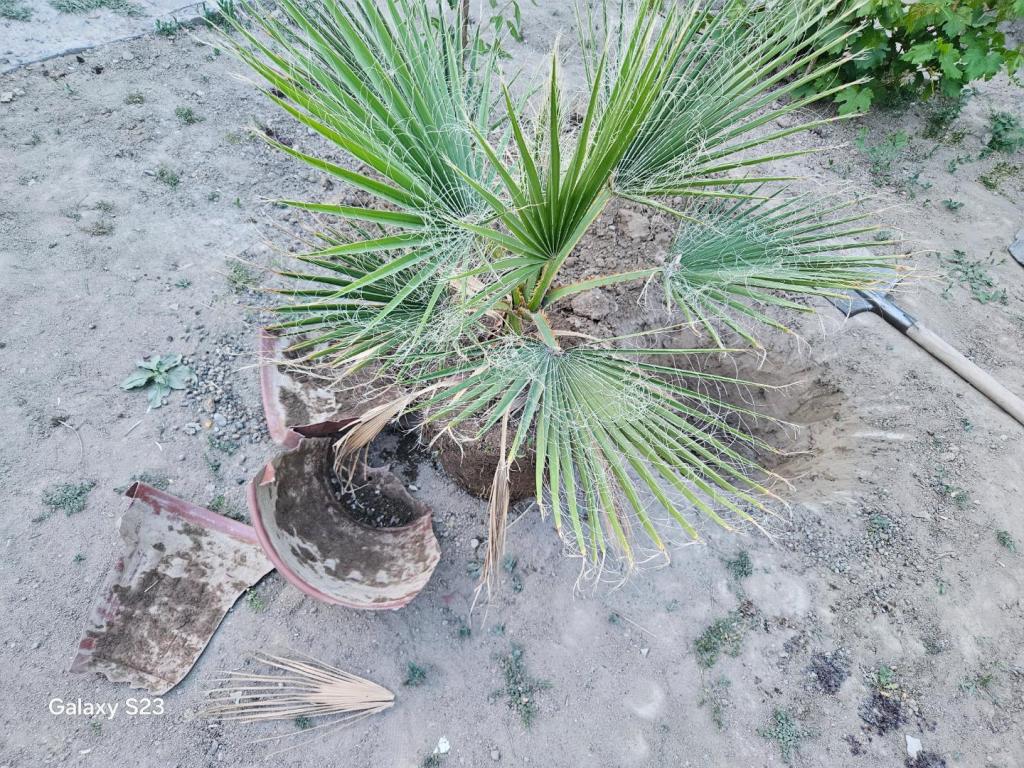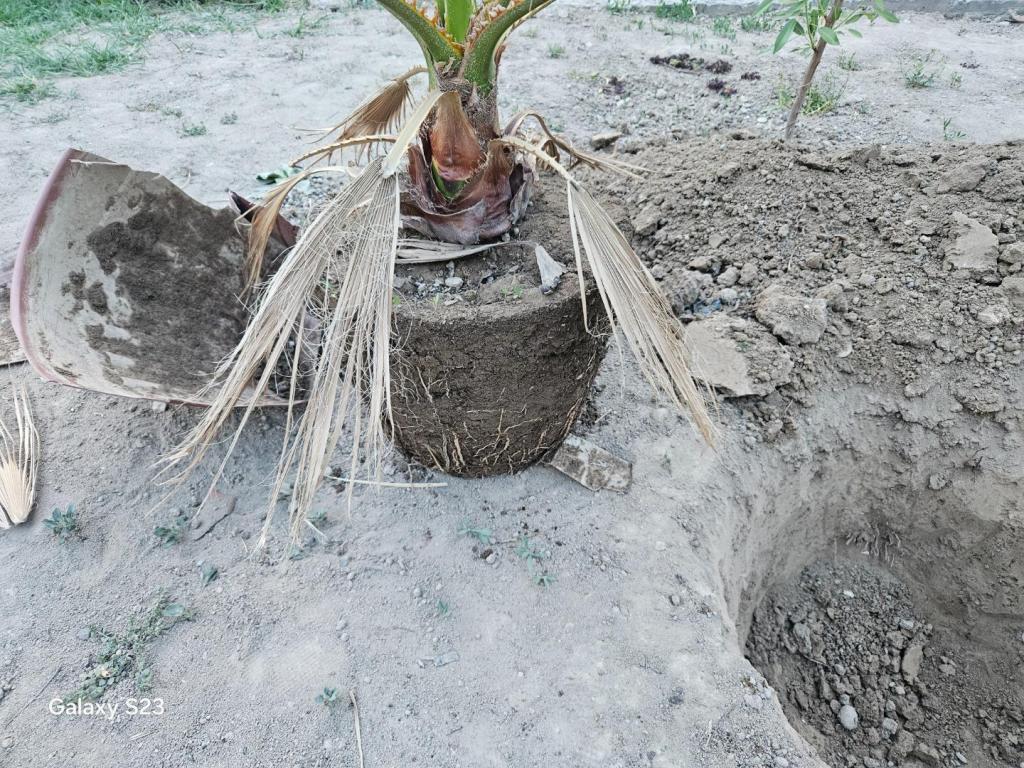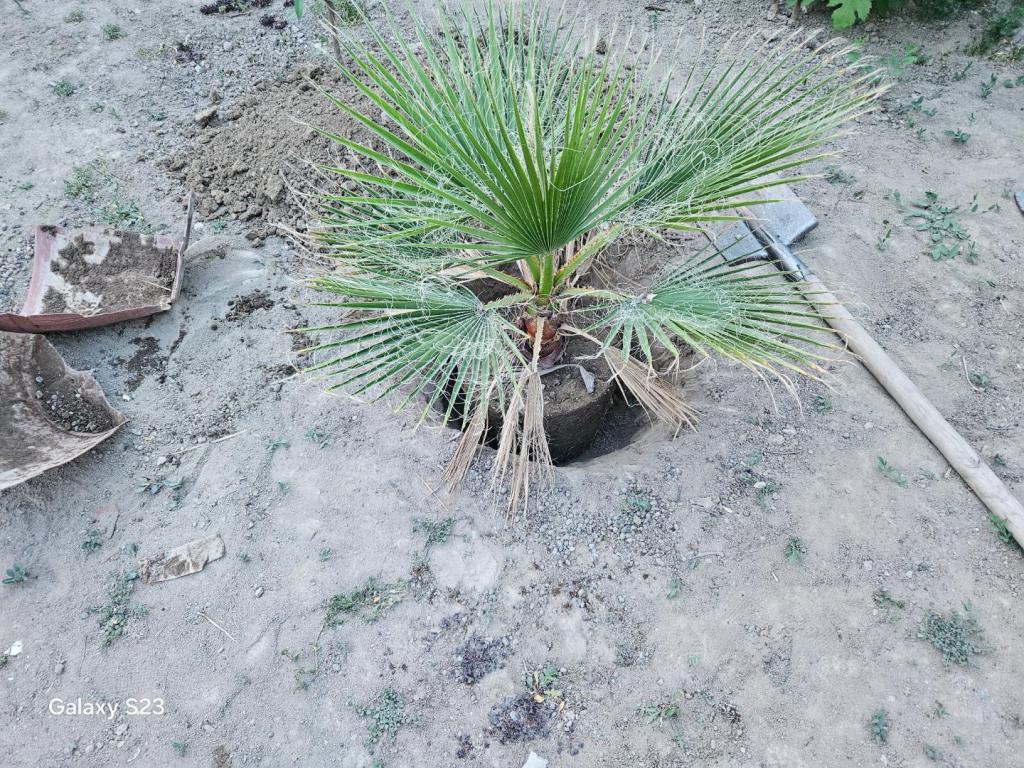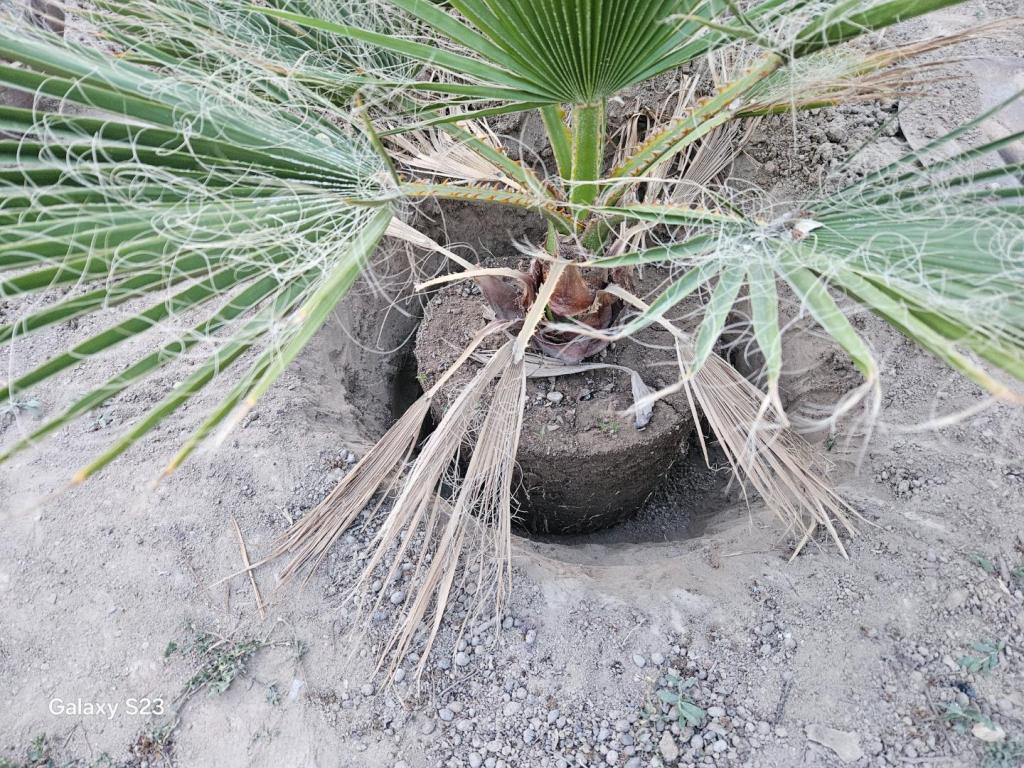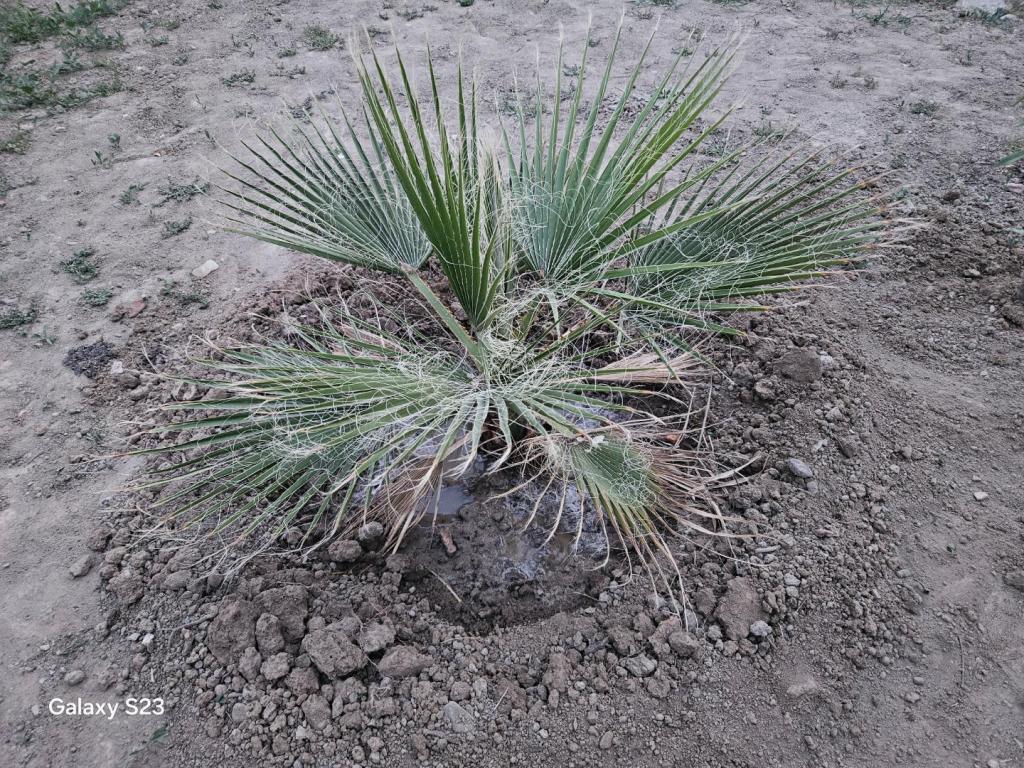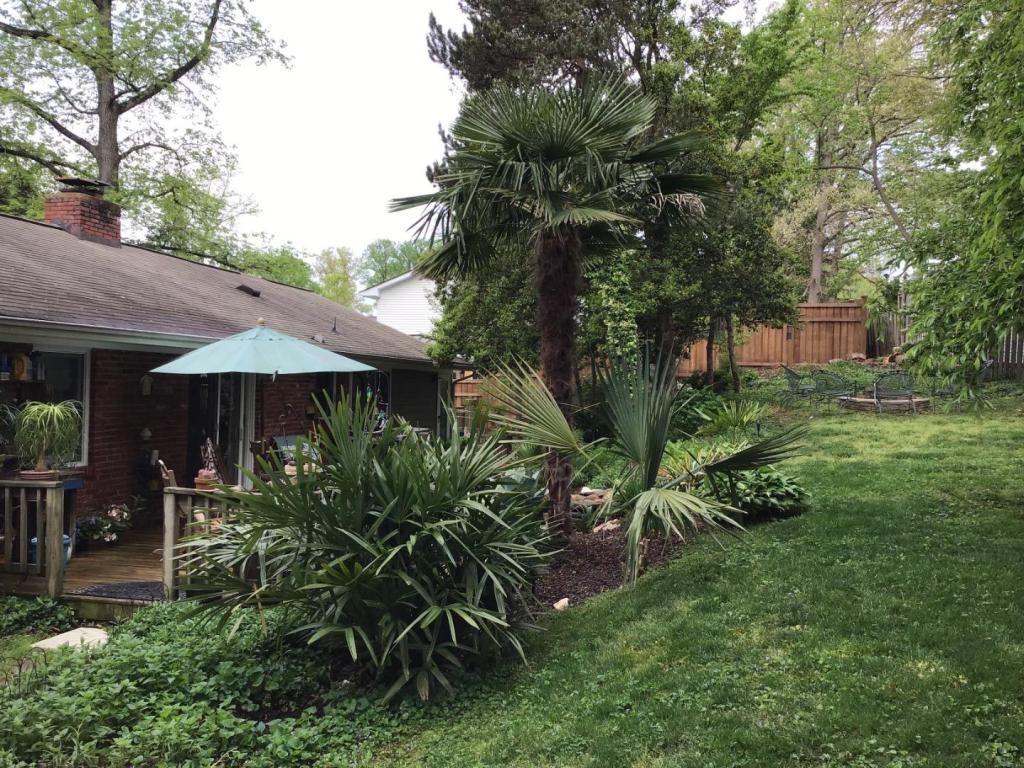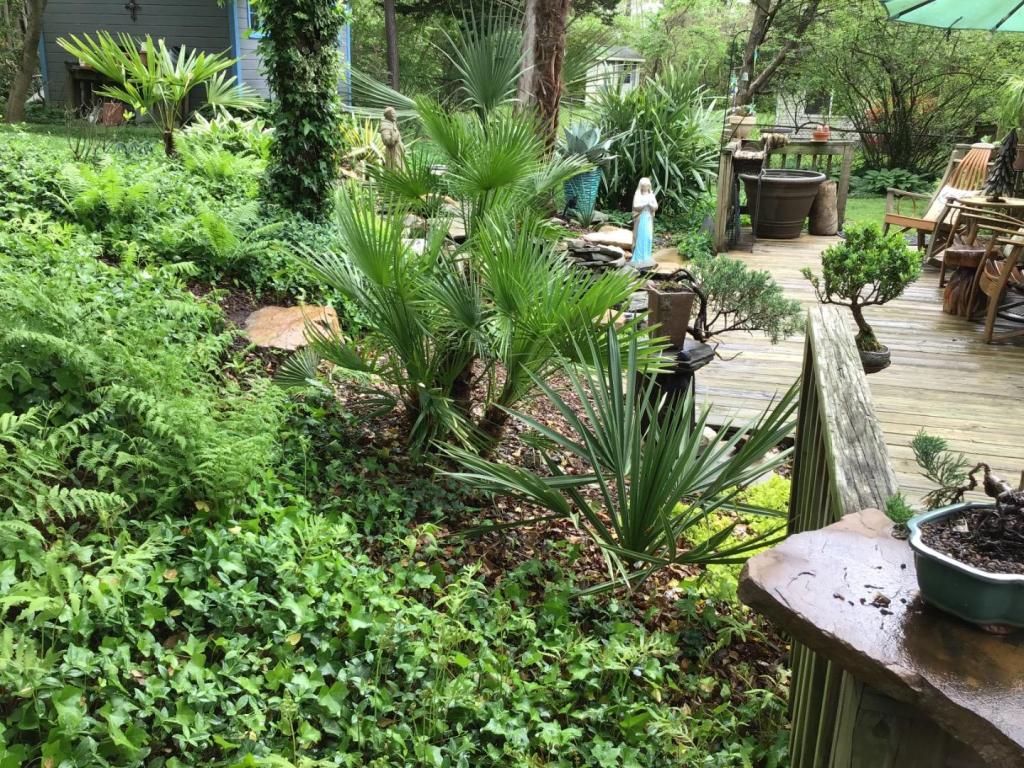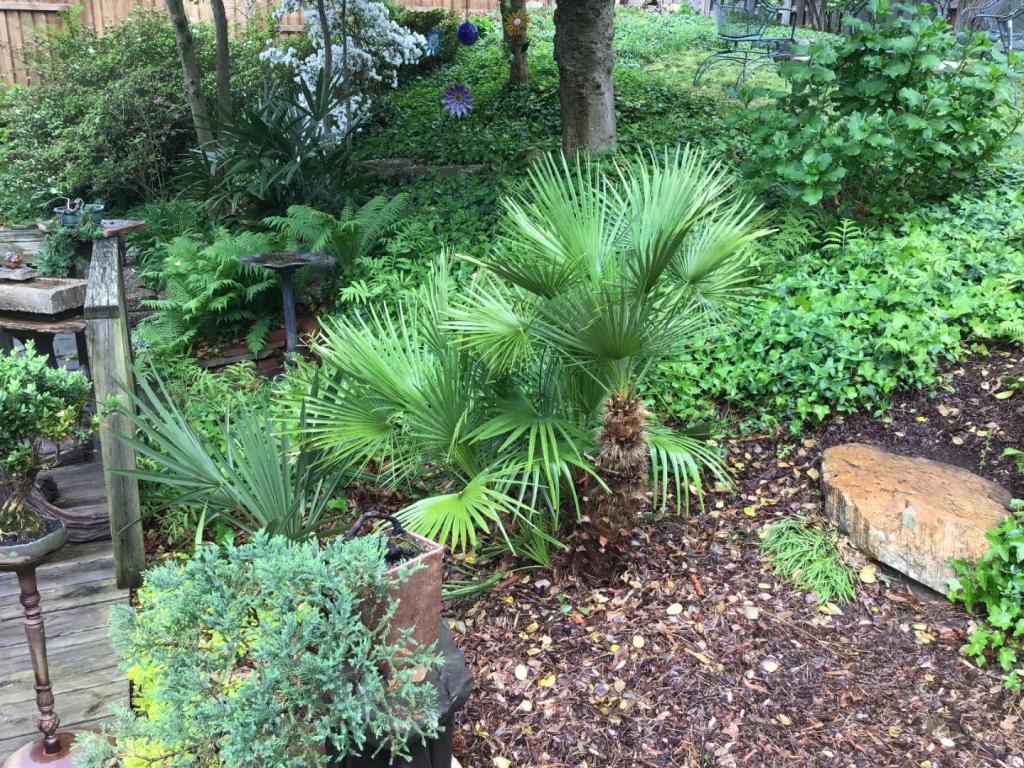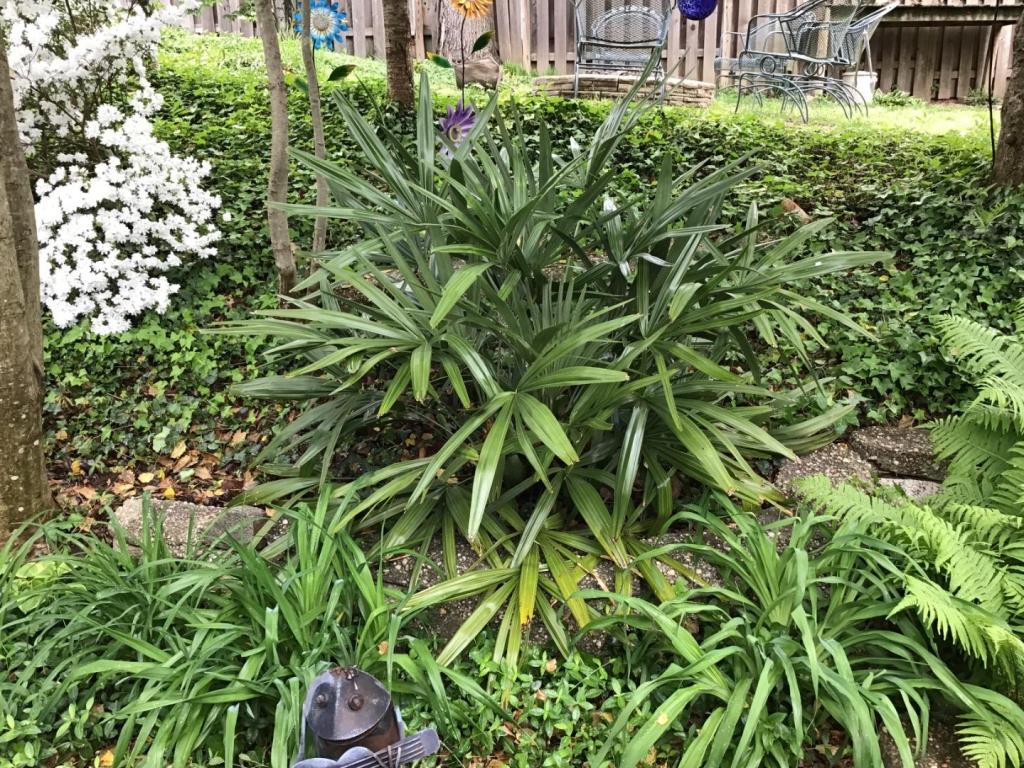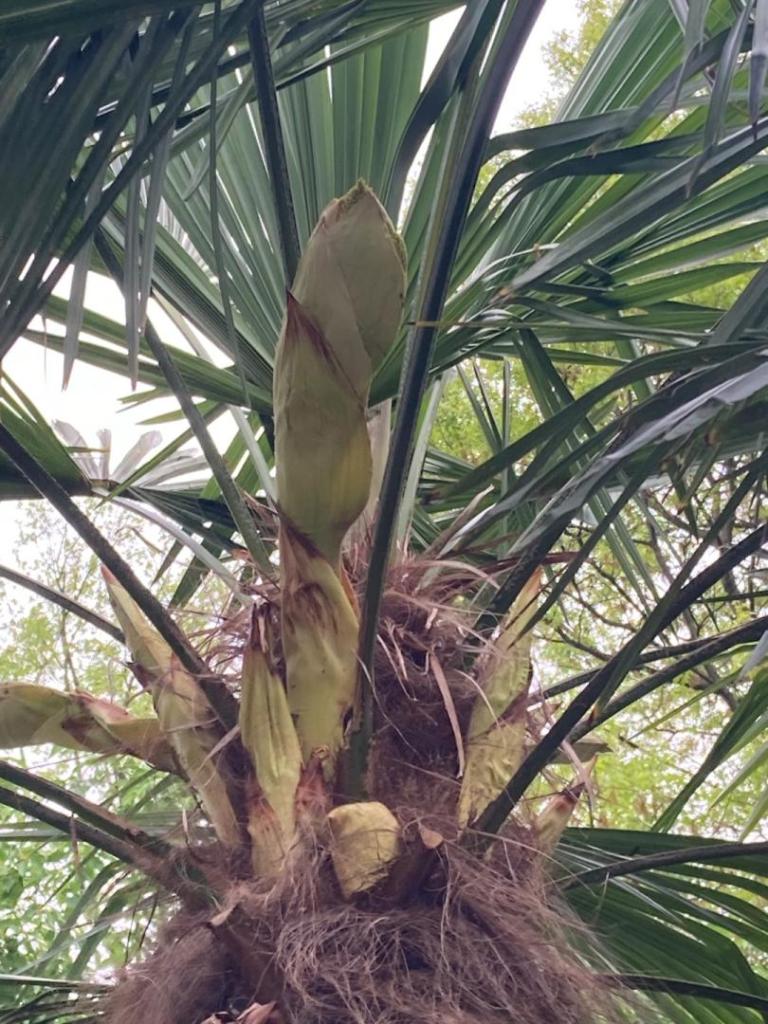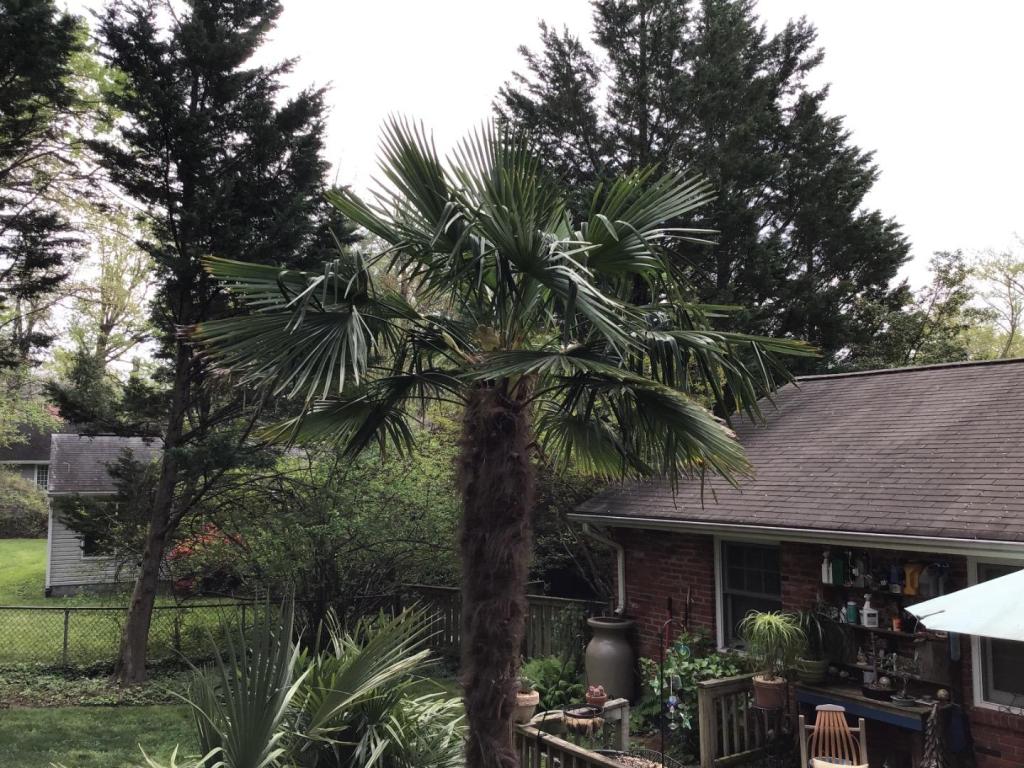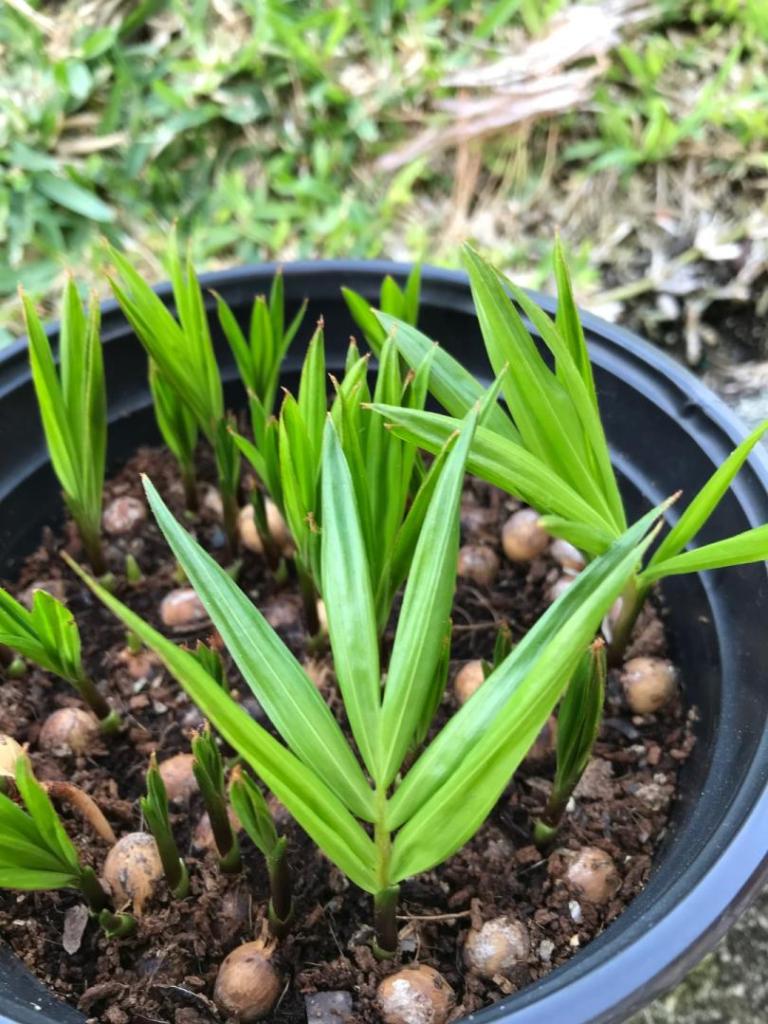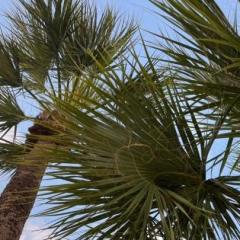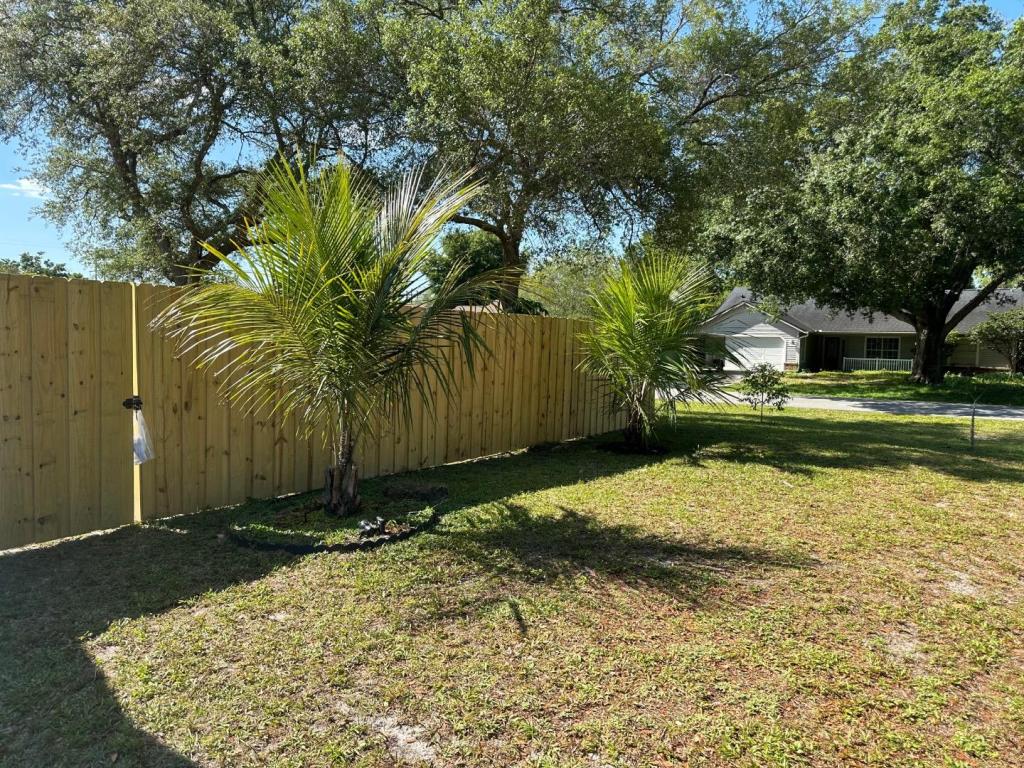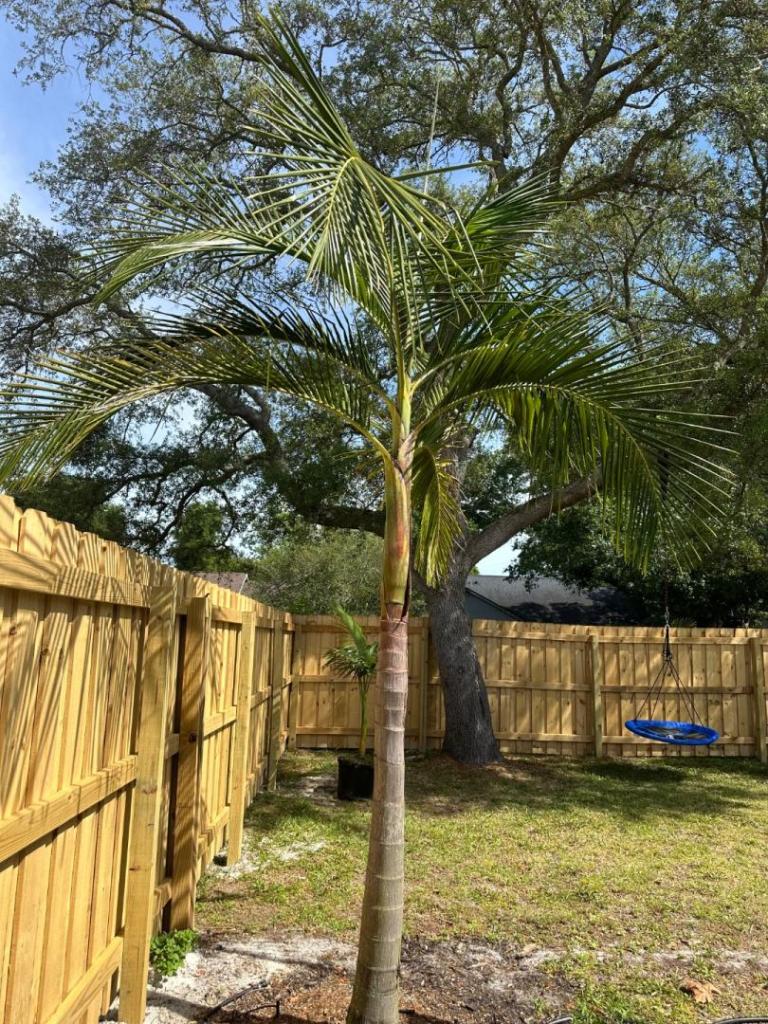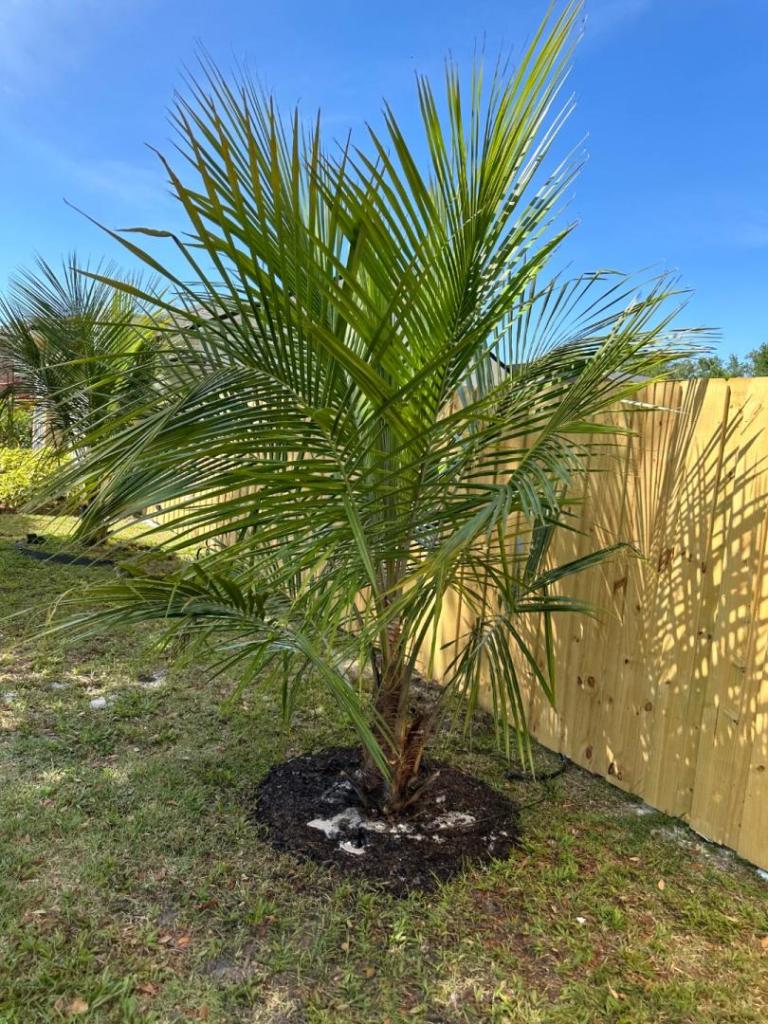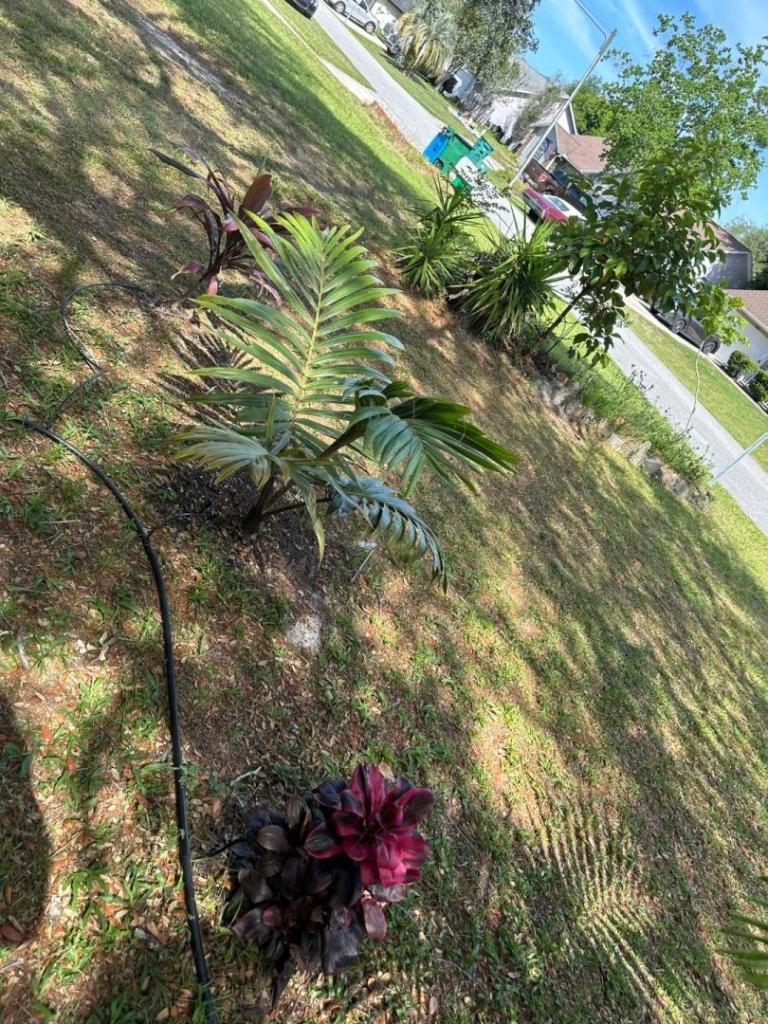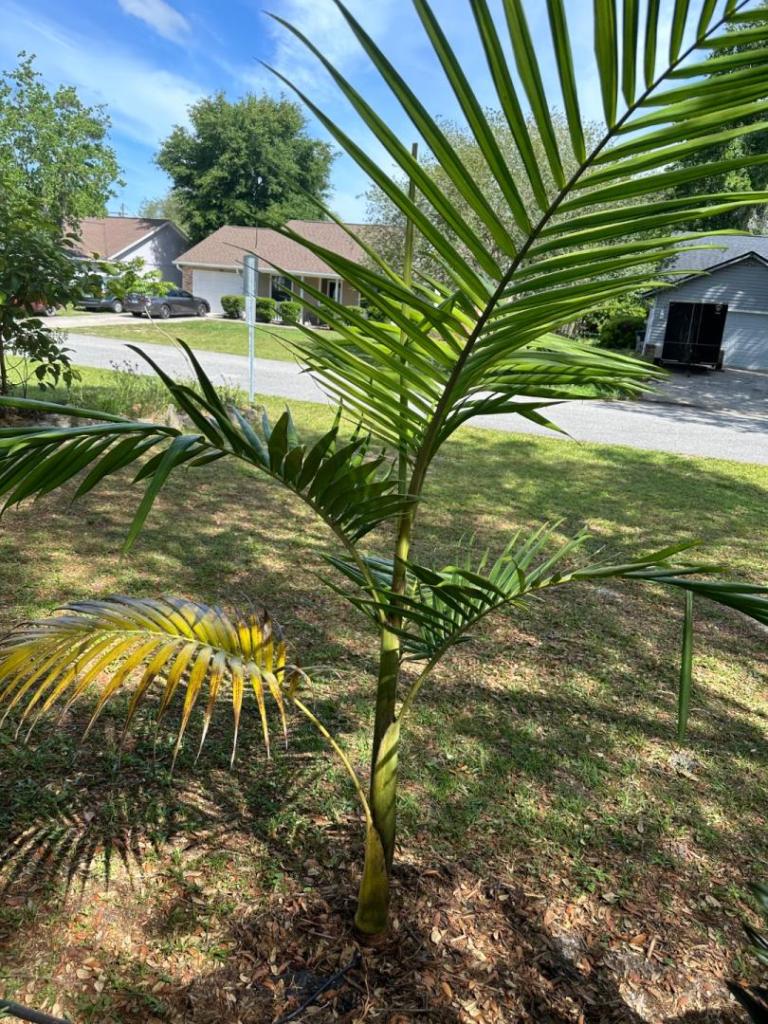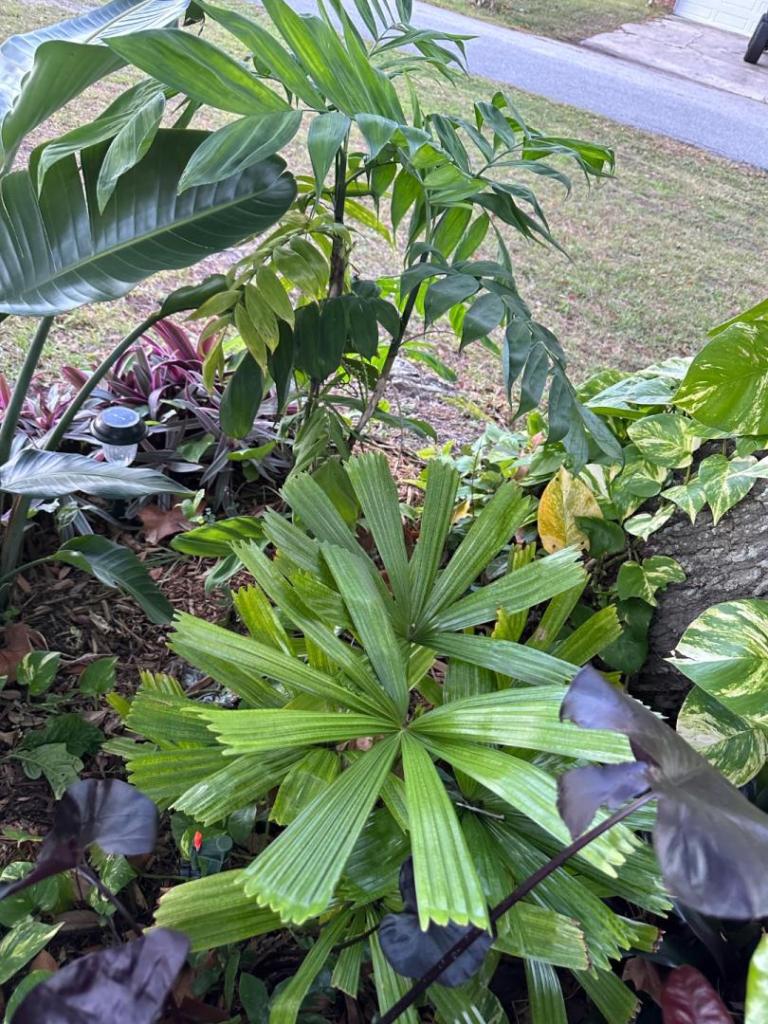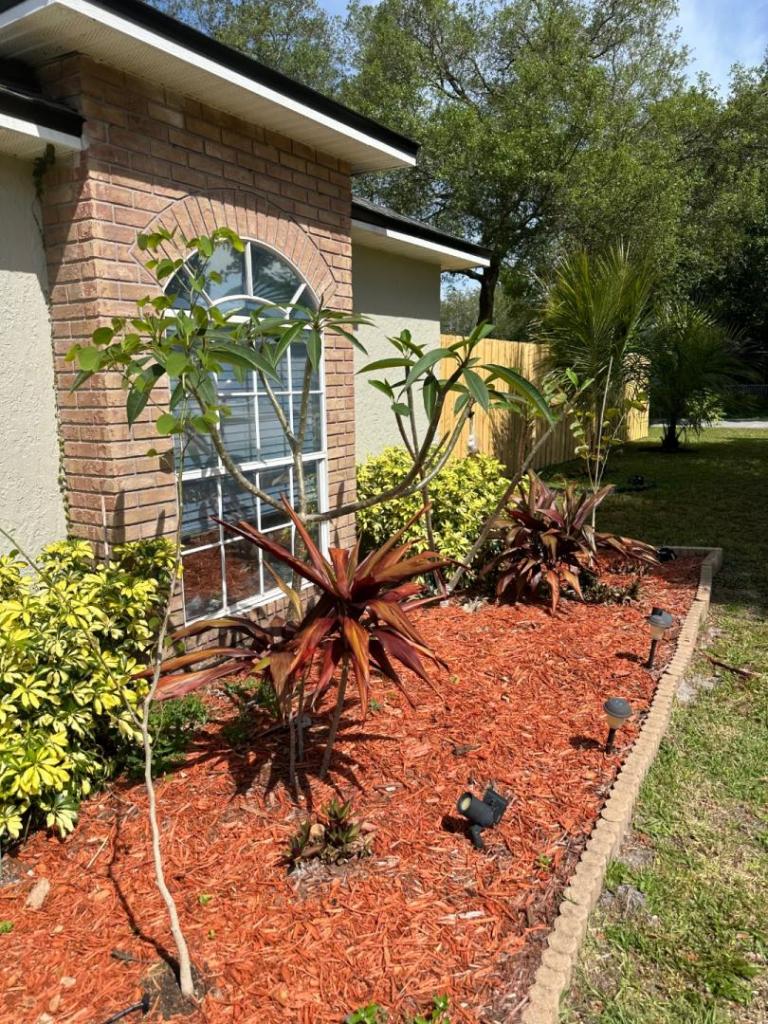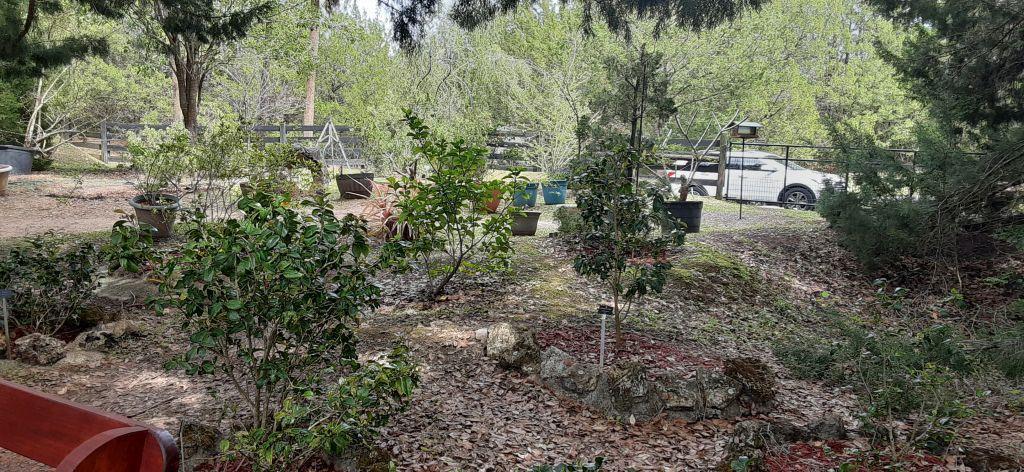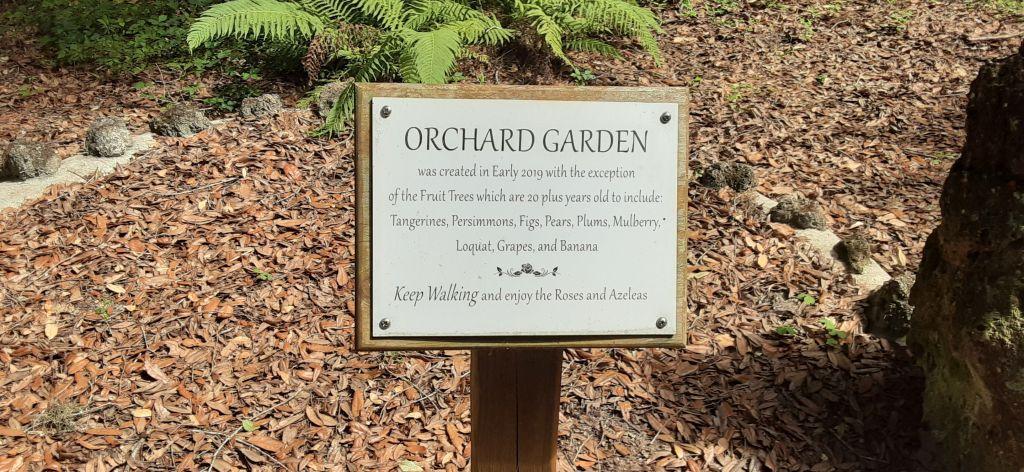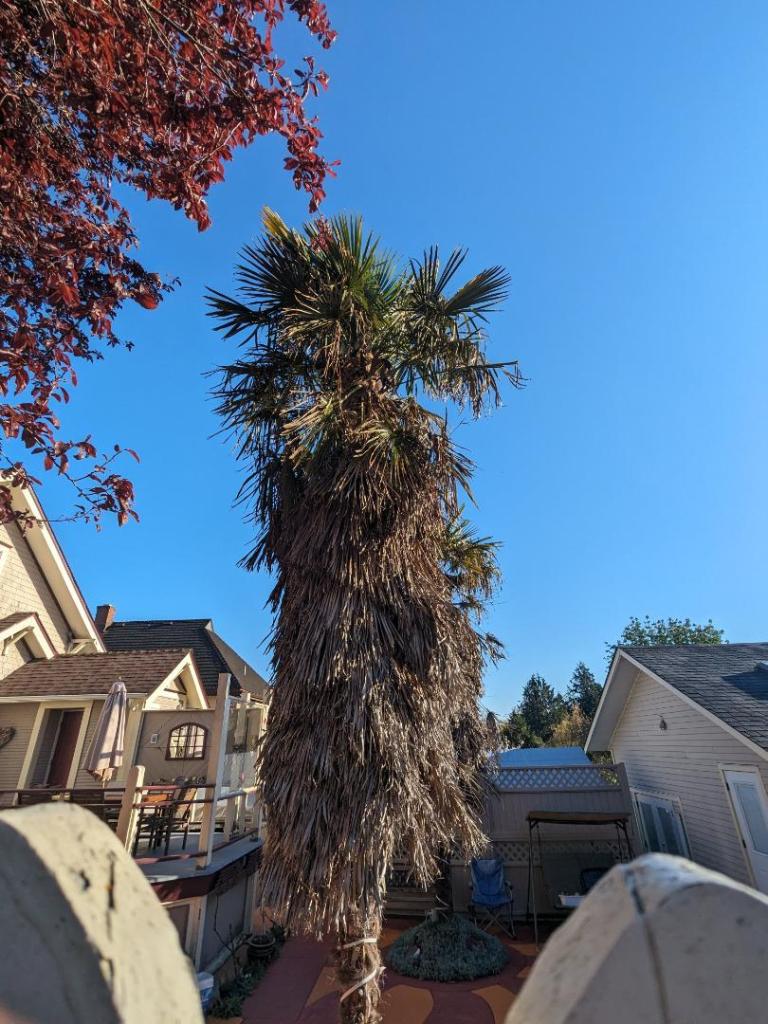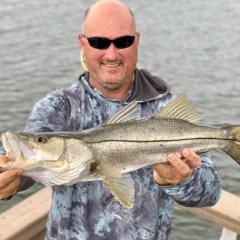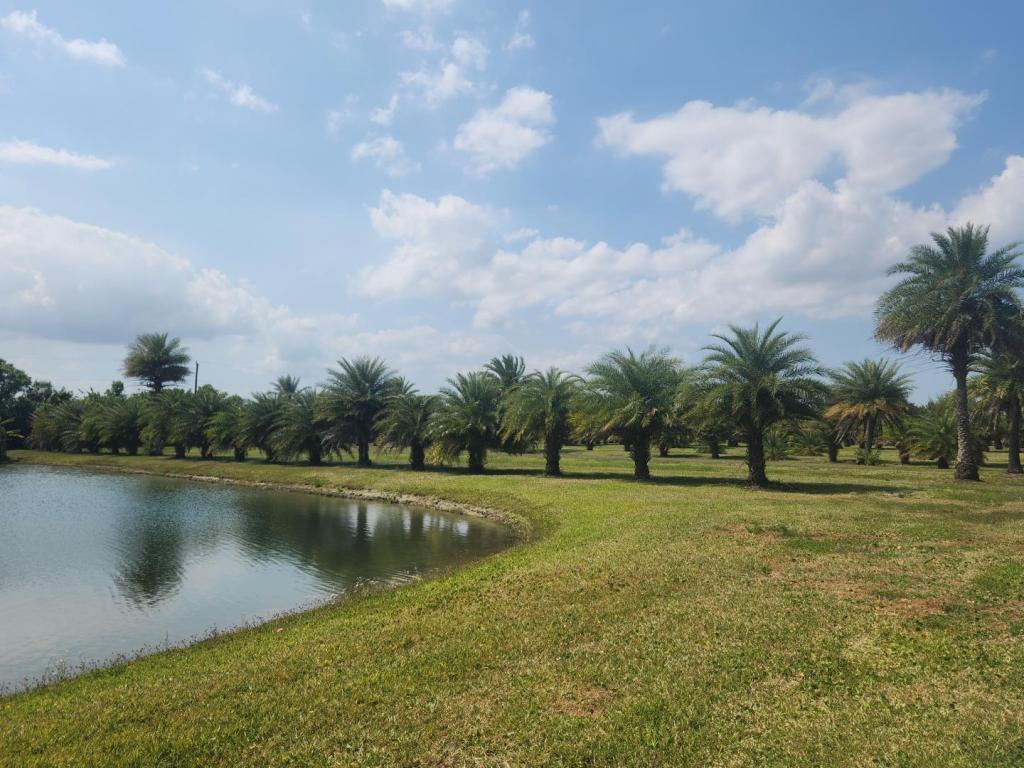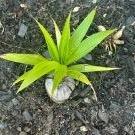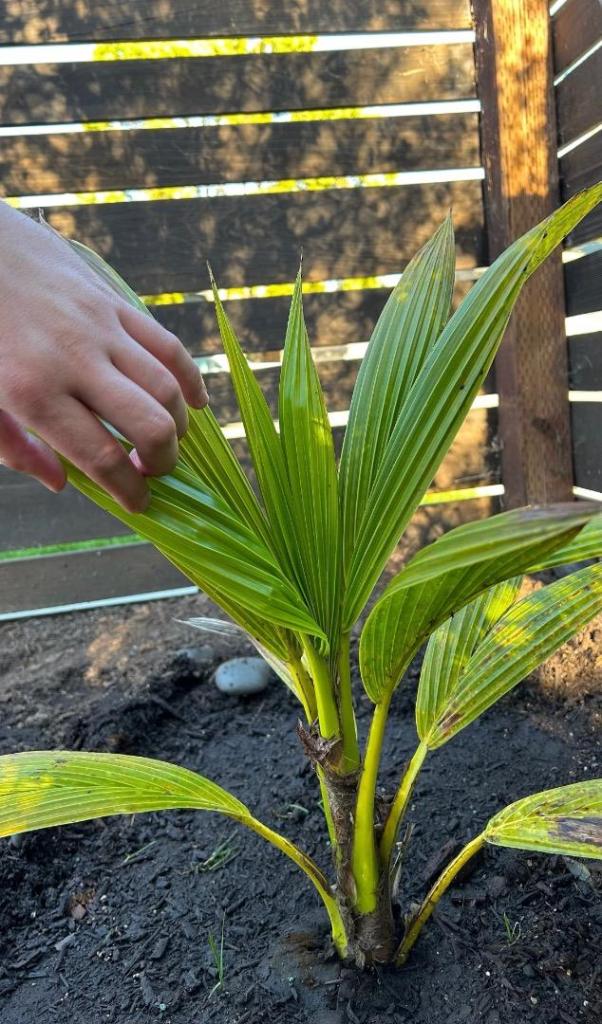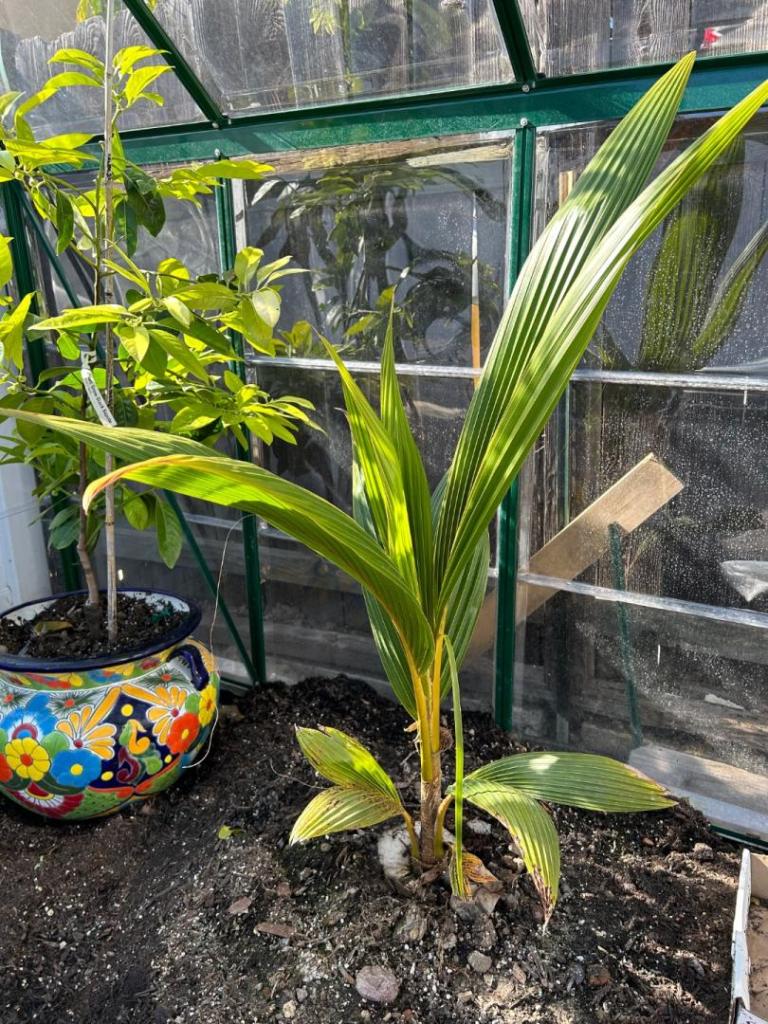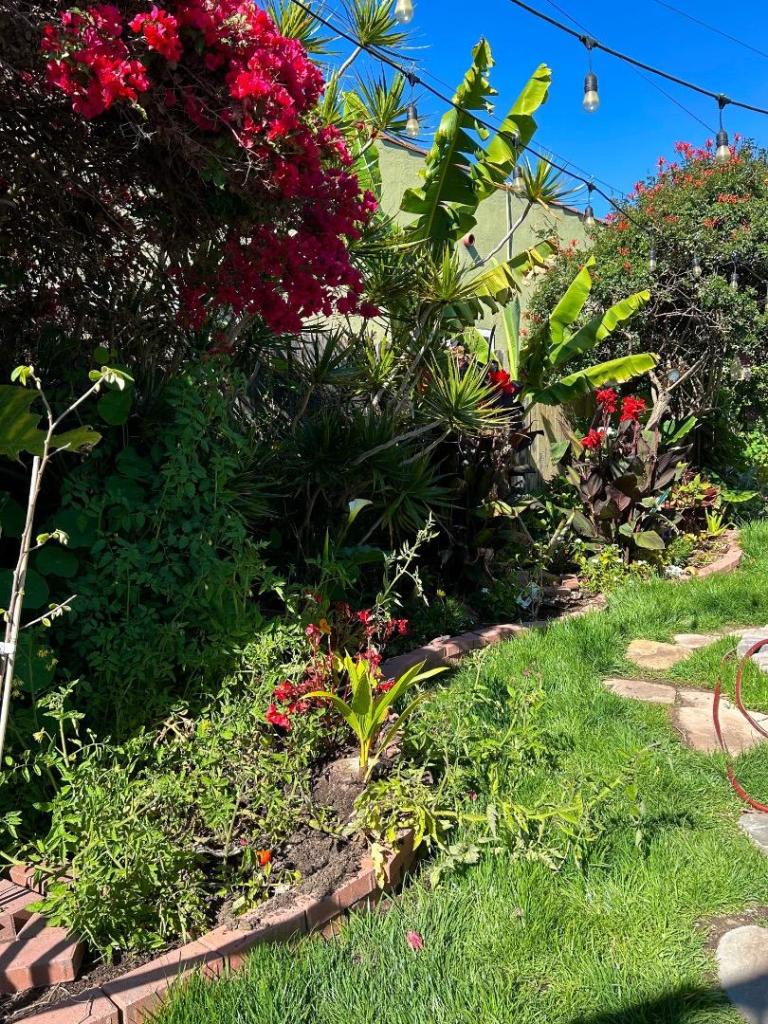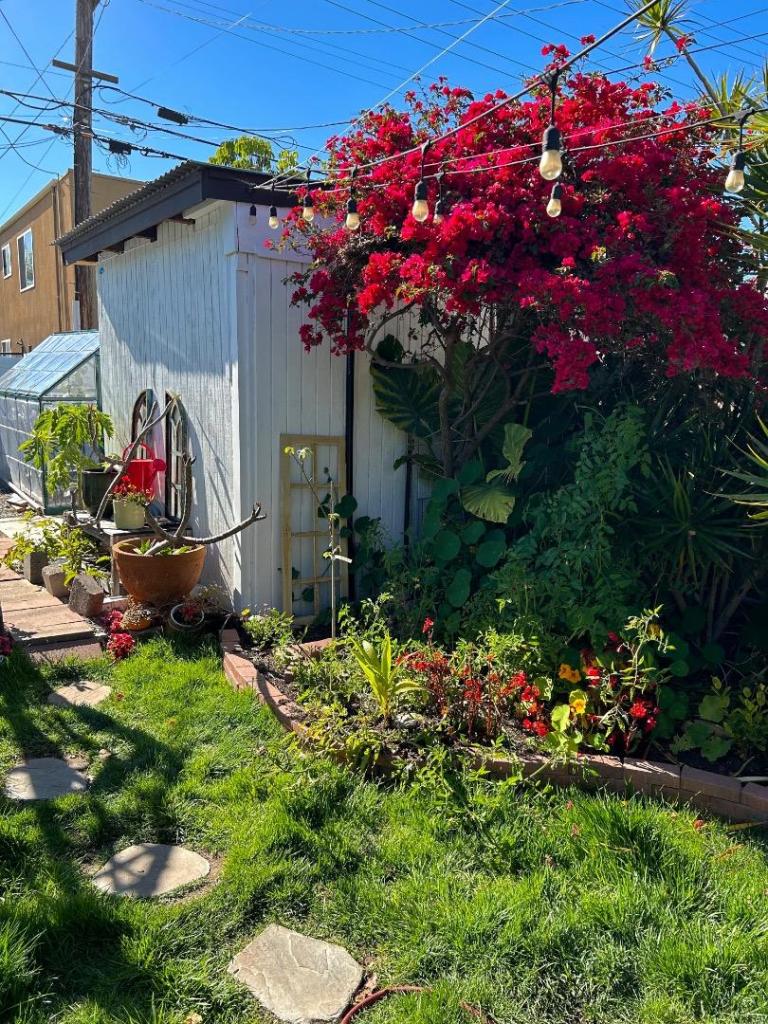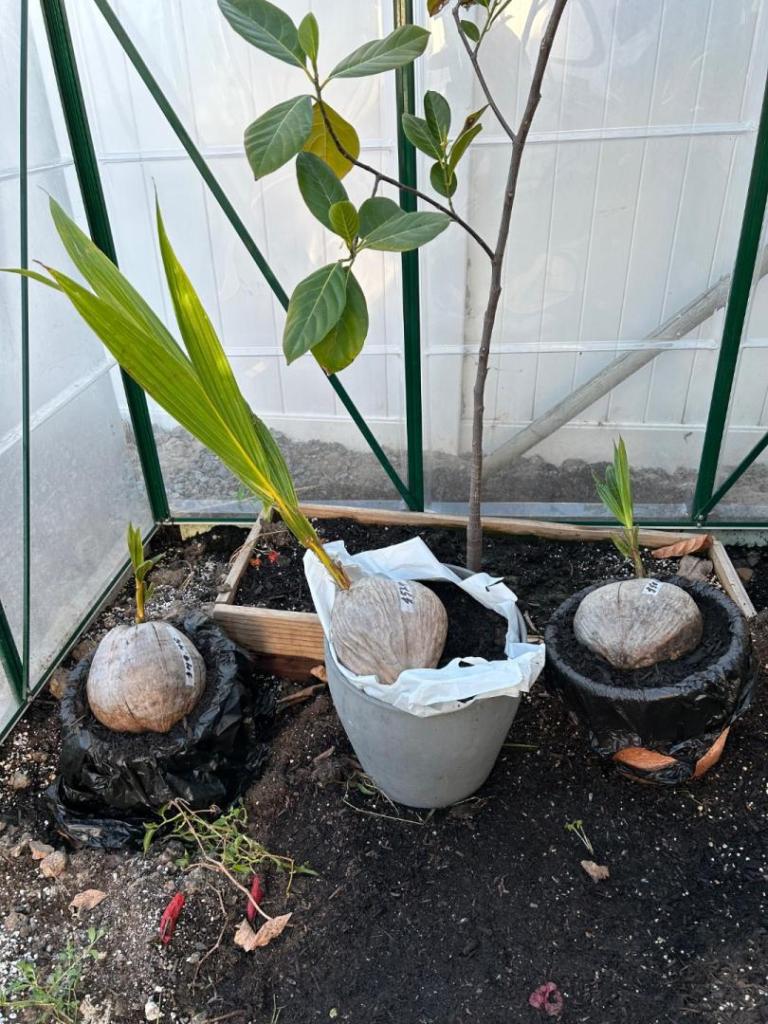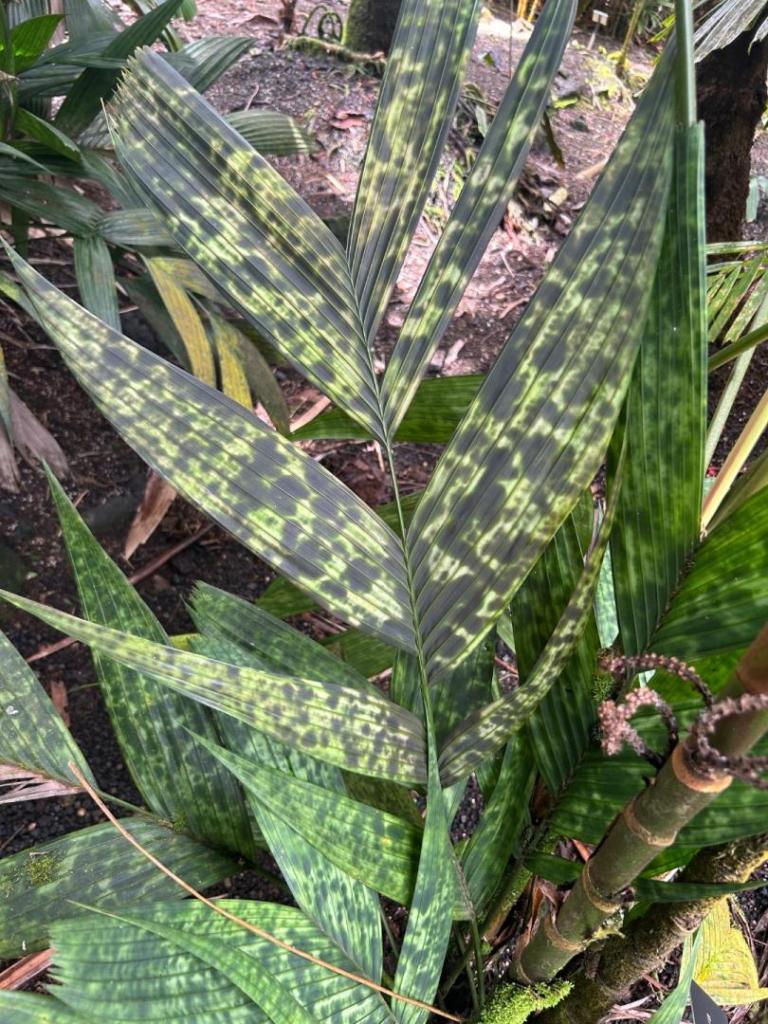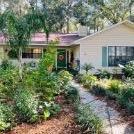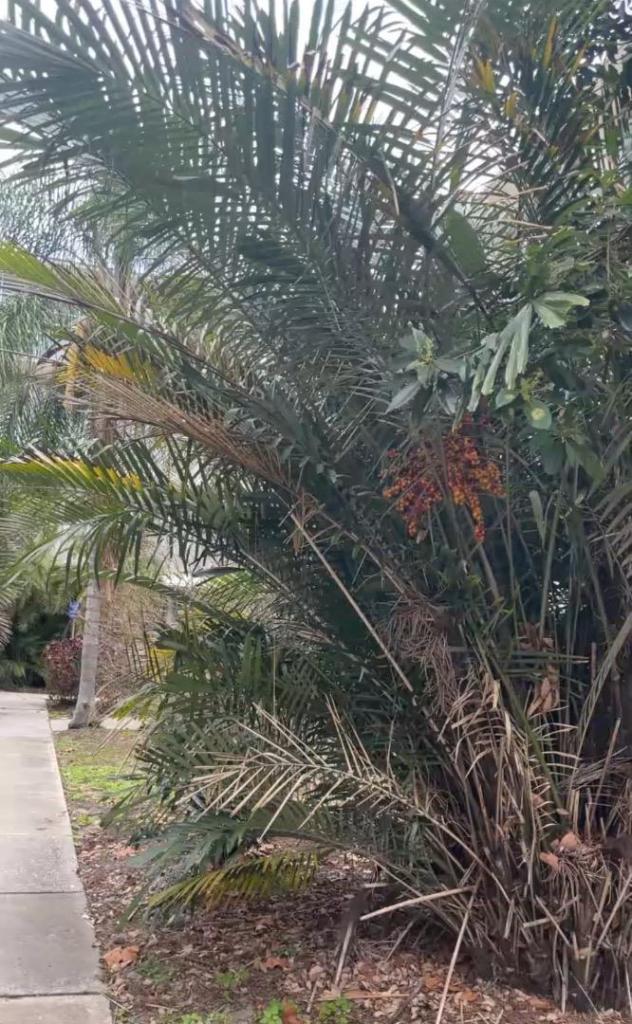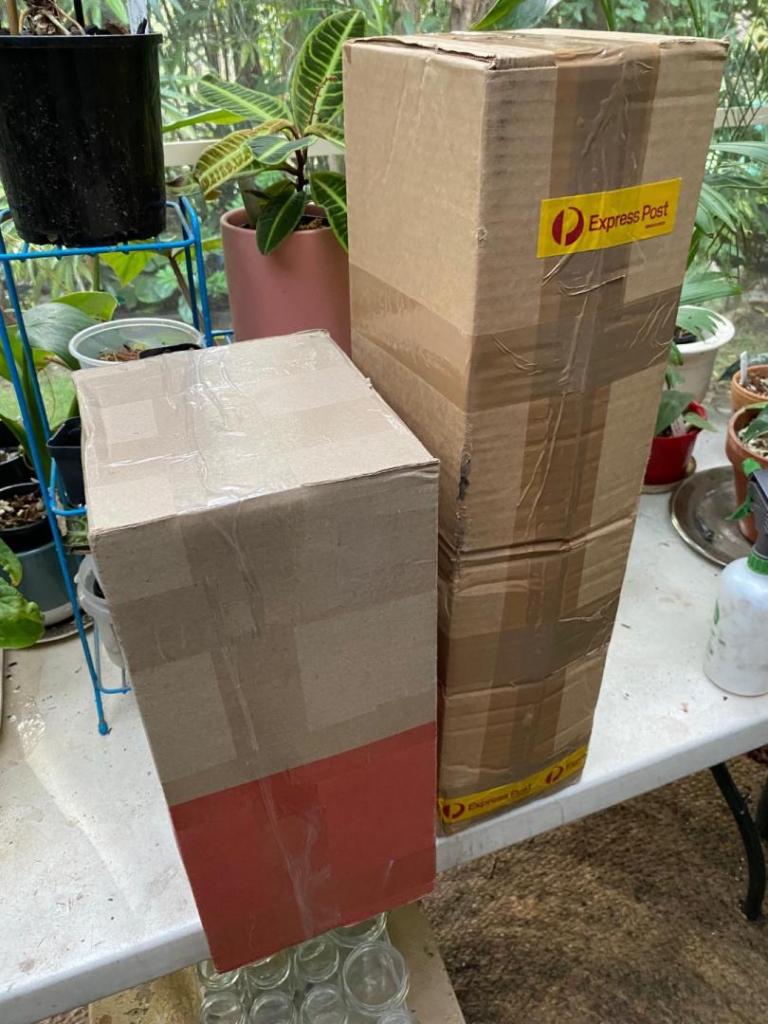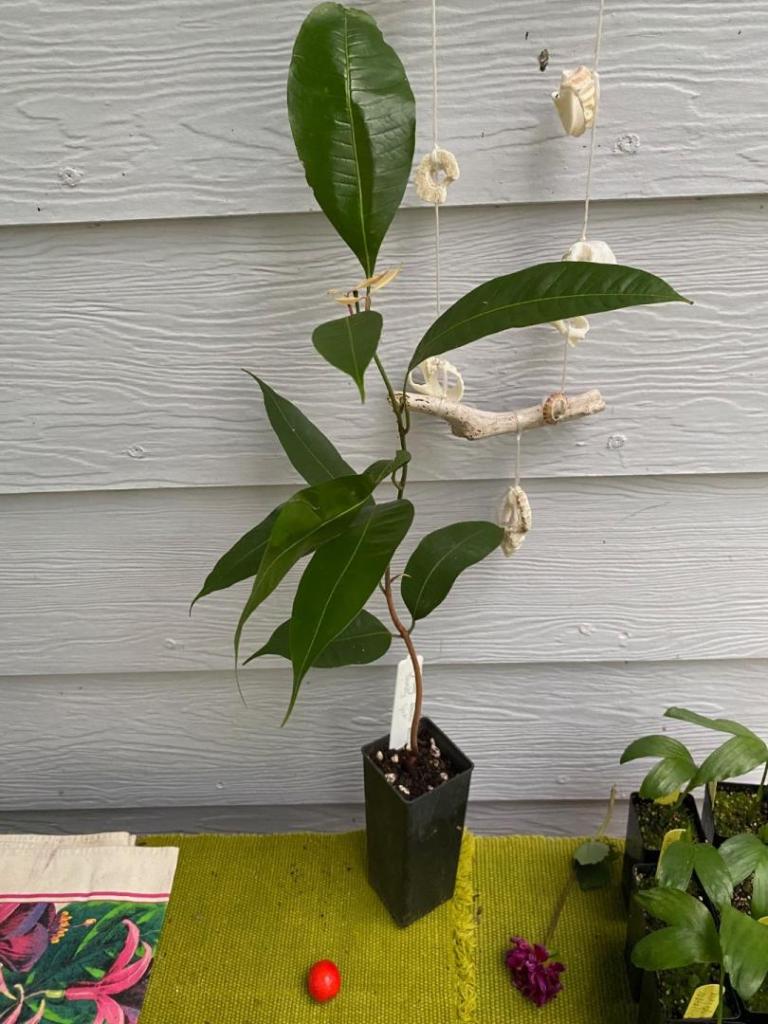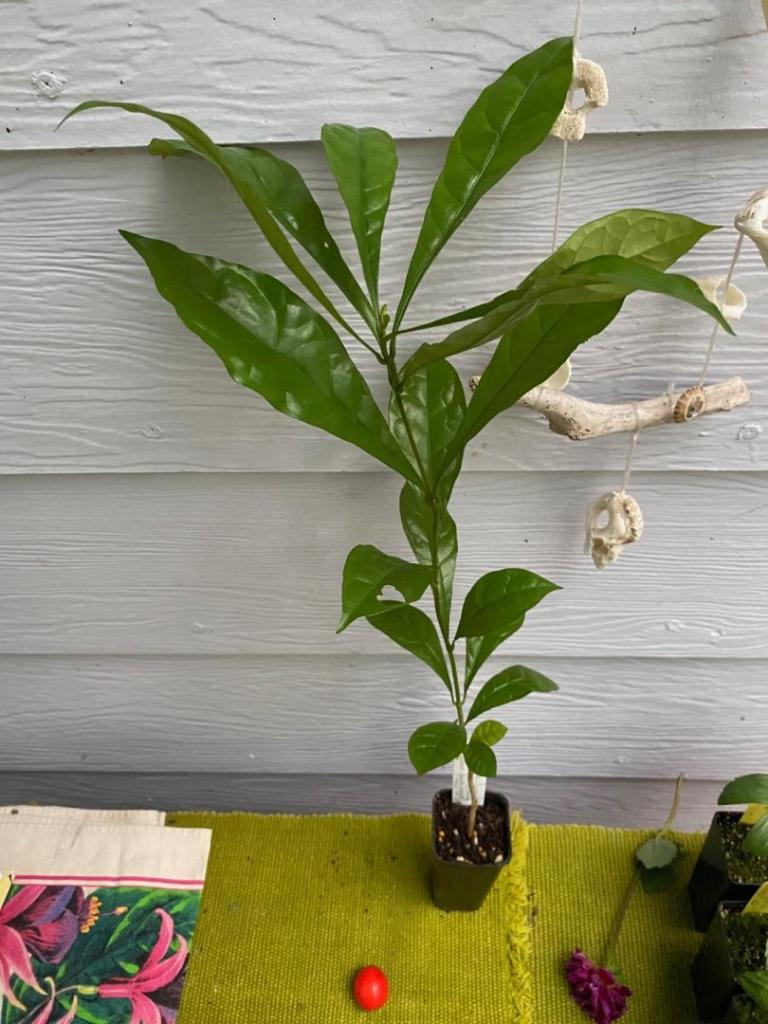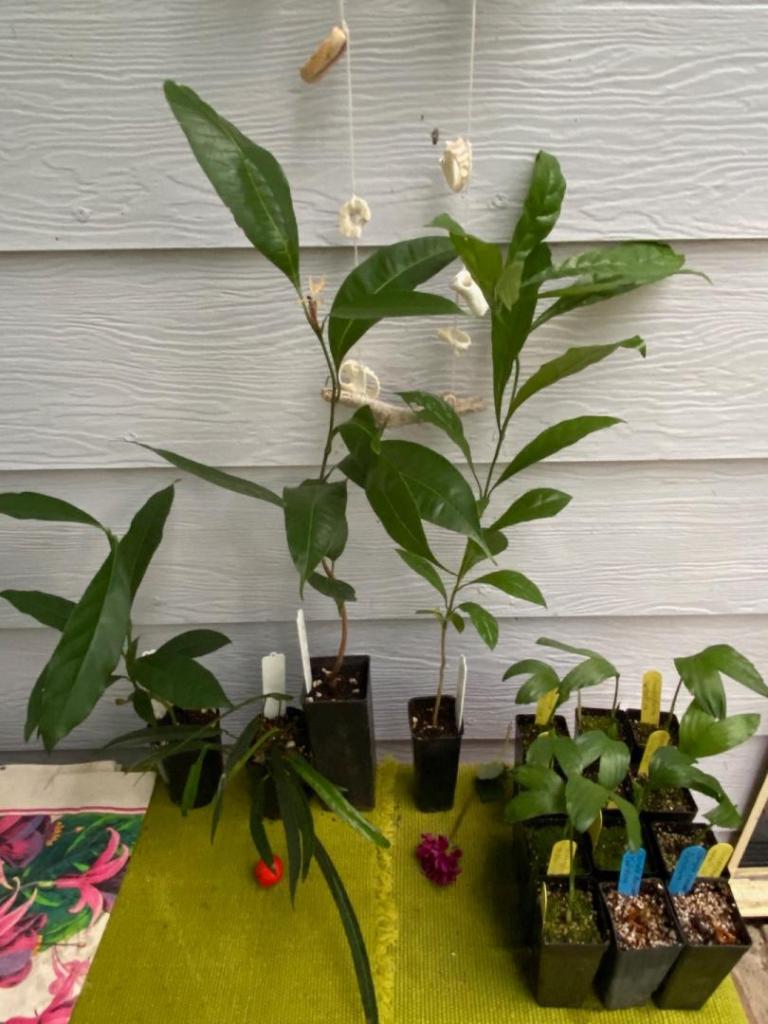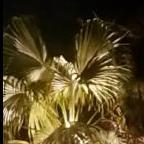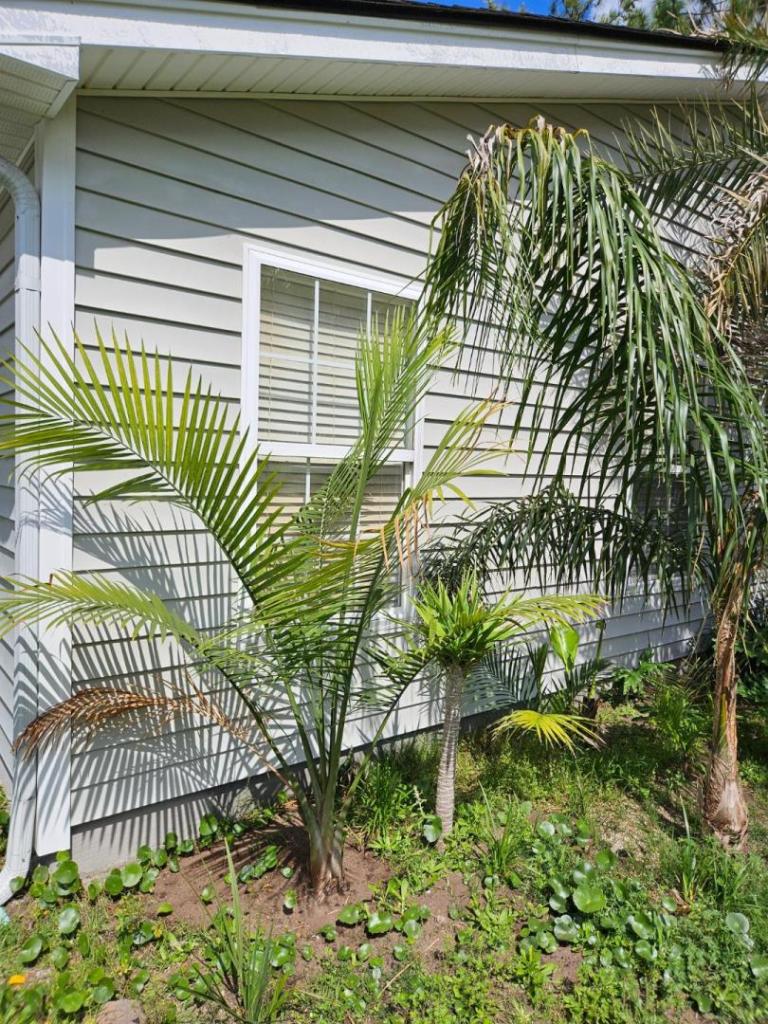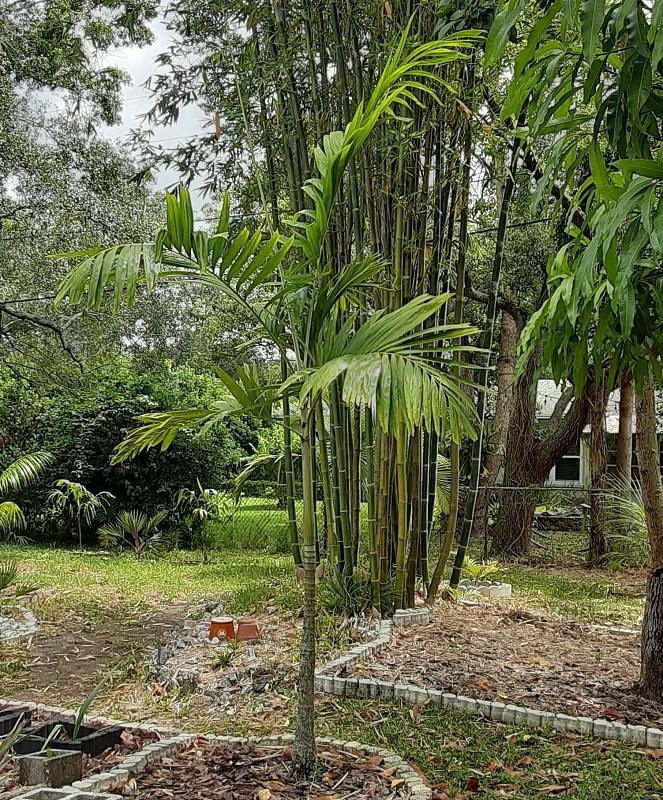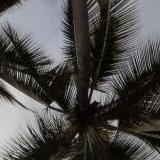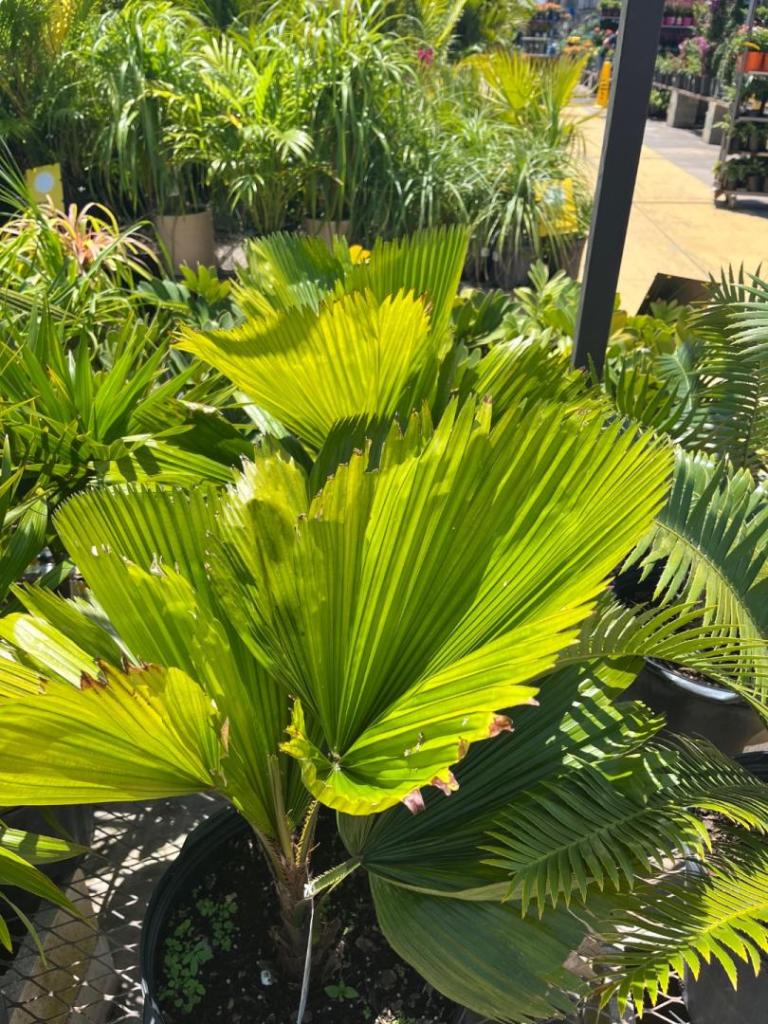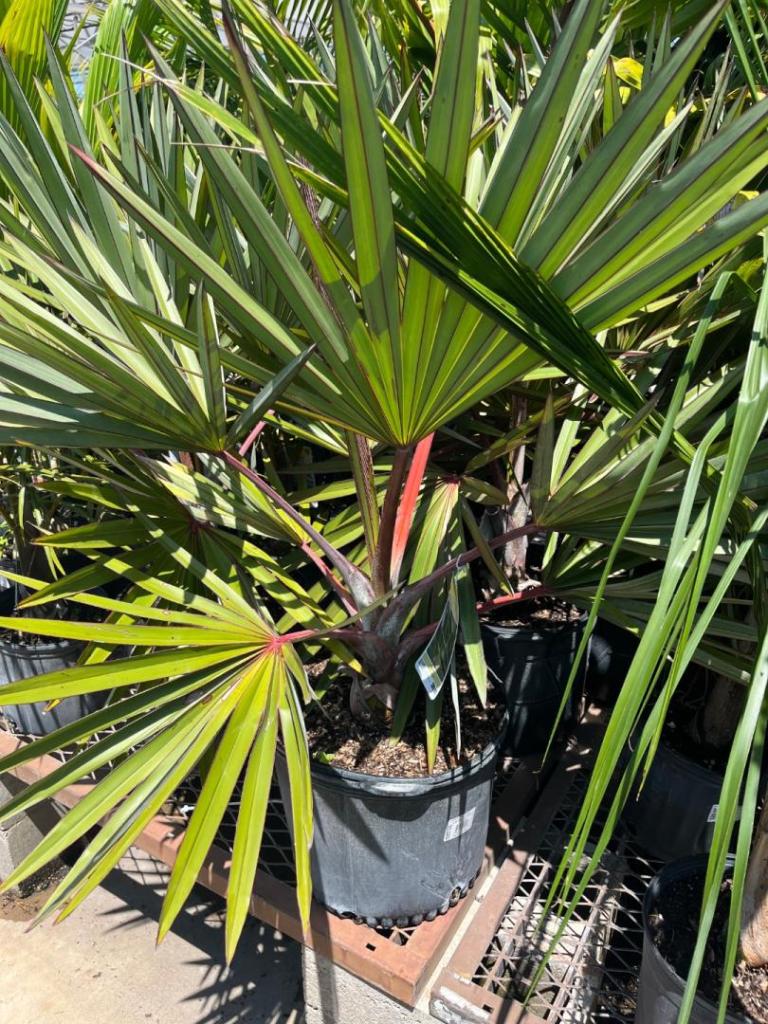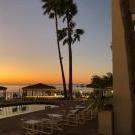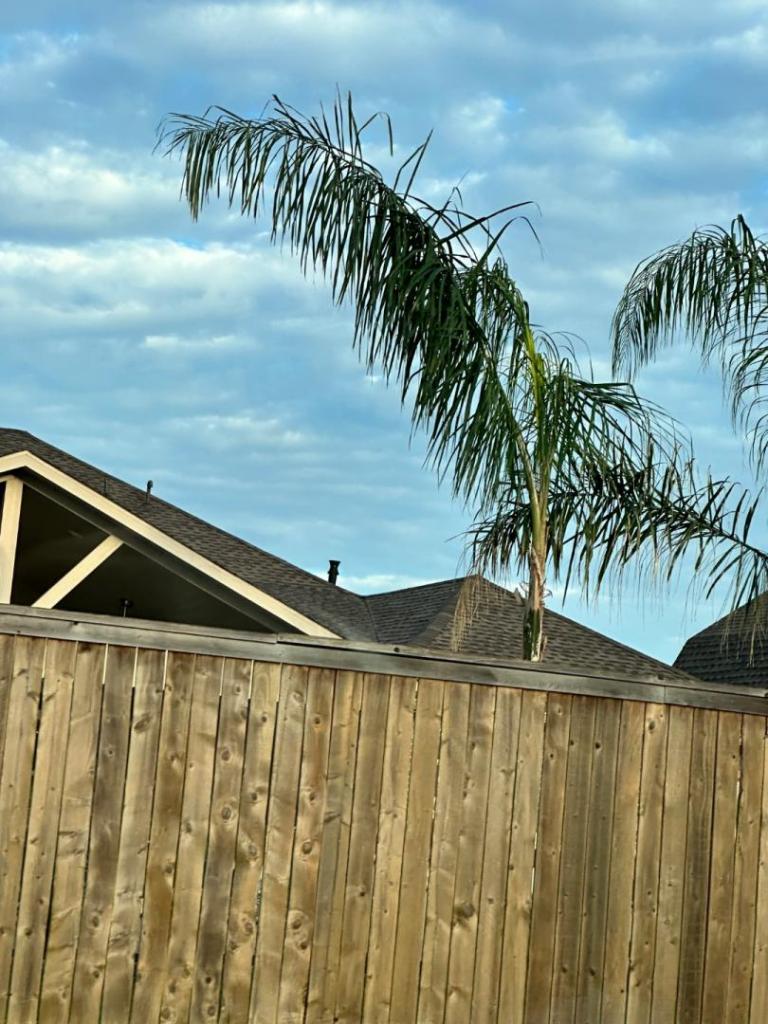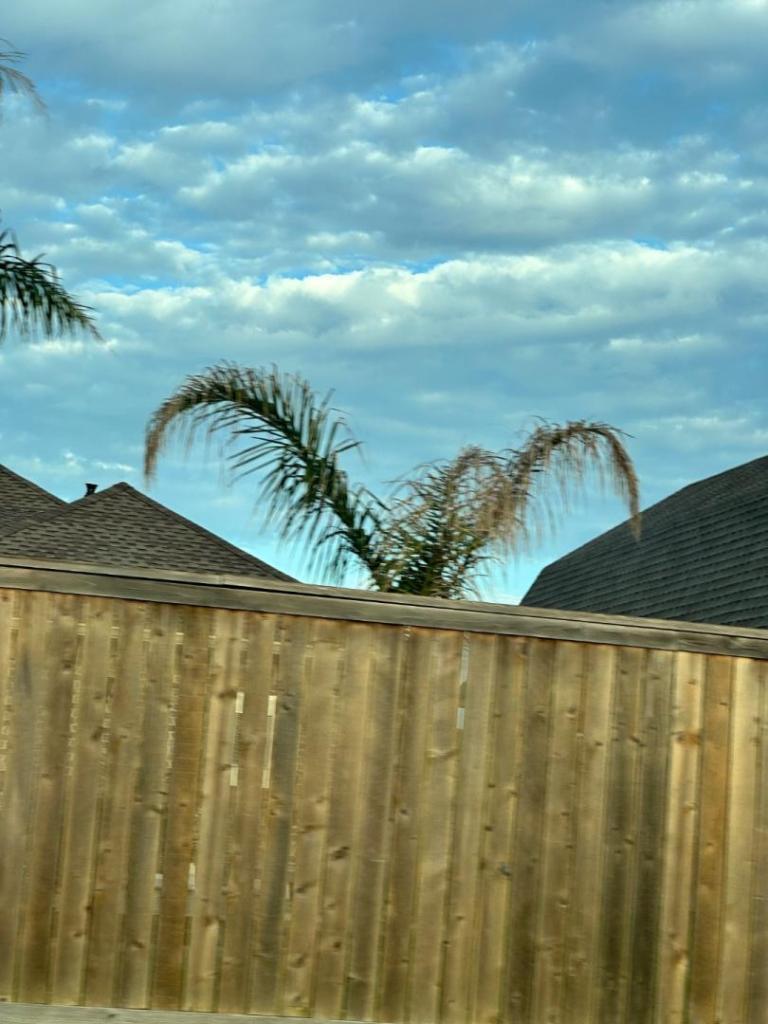Leaderboard
Popular Content
Showing content with the highest reputation since 04/18/2024 in all areas
-
I planted the first palm at my new house today. It was a 45 gallon monster with about 3 foot of trunk that had wayyy outgrown its container. Phoenix sylvestris is the species. probably weighed 500lbs. That pygmy palm was there from the builder and is getting ripped out to install a patio, so I don't count it. Edit: Photo working now!21 points
-
Here are photos I took from SFBG! This is a unique climate and one of the few public gardens where you can see Plectocomia himalayana, Lepidorrhachis, and Juania! Full album here Plectocomia himalayana Ceroxylon quindiuense and Jubaea chilensis Rhopalostylis sapida Juania australis Lepidorrhachis mooreana13 points
-
I was passing through El Cajon, CA and stumbled across this beautiful palm garden. They are probably the healthiest Parajubaea I have seen in California! Photos of palm garden here11 points
-
I now have 6 Jubaea chilensis seedlings and one Jubutia. I will likely keep these potted to at least 5 gallons before planting them in the ground along the forests edge. I am located just north of San Antonio, but at over 1,000 feet above sea level, my nights are cooler and my daytime humidity is much lower. I am hoping that these can survive my zone 8A or colder winters, and the Dallas area survivors have brought me some solace. The Jubutia is the 1 gallon pot on the left.10 points
-
10 points
-
10 points
-
@Mr. Clark Welcome to PalmTalk! Because of where you are located, you can grow practically anything. That said, if you want to get the nursery "into the black" as quickly as possible, you'll want to get yourself a guaranteed revenue stream with stuff that can grow fast and wholesale just as fast to commercial and government customers. Residents also buy most of the palms below and many of them are outside of the typical "Phoenix/Syagrus/Washingtonia/Sabal/Butia" that wholesalers have relied on in the past. Roystonea regia (Royal Palm) and Cocos nucifera (Coconut Palm) are an easy sell to consumers. Down your way they are common, but Royals are increasingly being used here to replace the more disease-prone Syagrus romanzoffiana (Queen Palm) and Phoenix species. The aforementioned Beccariophoenix alfredii is increasing in popularity rapidly from Jacksonville down along I-95 and the entire I-4 corridor. Mules are the even-hardier pinnate palm for cooler areas. Our municipality plants both everywhere. A good family of palms to sell includes Veitchia arecina (Montgomery Palm), Adonidia merrillii (Christmas Palm), Wodyetia bifurcata (Foxtail Palm), and Carpentaria acuminata. Where you are located and in most of South Florida, any of these can grow anywhere. In Central Florida, Christmas Palms and Foxtails sell quickly for residential landscaping and hotels. Veitchia are more of a novelty here, whereas down your way, they line streets and are planted near buildings. Carpentaria is more of a dark horse of the family, but is a good palm for areas that require a Veitchia look with a smaller crown. If you hybridize Veitchia and Wodyetia, you'll get the highly-coveted "Foxy Lady" palm. Another good family of palms to include is Bismarckia nobilis (especially the silver variety) and at least Latania loddigesii (the Blue Latan Palm). Bismarckia is popular throughout almost the whole state and grows pretty fast once the root system is in place, and I've increasingly seen Blue Latans used in milder areas near me, like Winter Haven and Palmetto. Another easy seller is the Archontophoenix genus, especially Archontophoenix cunninghamiana and Archontophoenix alexandrae. Collectively, King Palms are very desirable and the supply is way lower than the demand. Archontophoenix cunninghamiana becomes viable somewhere around coastal JAX or St. Augustine. Archontophoenix alexandrae tends to do better a bit further south, but you'll still have a market for them in roughly 2/3 of the state. The Chambeyronia genus, which has now swallowed the Kentiopsis genus, has a lot of popular, chill-tolerant crownshaft palms you can sell to 2/3 of the state. The big sellers would be Chambeyronia macrocarpa (all varieties), Chambeyronia oliviformis, and Chambeyronia pyriformis. The Chrysalidocarpus (a.k.a. Dypsis that grow in Florida) genus tends to sell decent. Probably the most sold is Chrysalidocarpus lutescens, but Chrysalidocarpus decaryi probably isn't too far behind. Chrysalidocarpus leptocheilos, Chrysalidocarpus pembana, and Chrysalidocarpus lanceolata would sell better if they were more commonly available. These grow a bit more slowly than most of the other palms above. With the arrival of Lethal Bronzing in Florida, I'd be remiss if I didn't mention the Livistona genus. In particular, Livistona decora is a prize for municipal planting here. Livistona nitida, Livistona mariae, Livistona australis, and Livistona chinensis are also planted frequently. These also tend to reach mature size at a later time than some of the tropical and subtropical options above. This list is a bit myopic since these are primarily what is bought along the I-4 corridor and areas either further south or with similar microclimates along I-95, but it gives you a way to operate at a profit in a shorter amount of time and still provide a unique inventory to most of the peninsula.9 points
-
I got more information from the nursery man, who planted this palm in November 2019. I inquired about the use of various fungicide's recommended by connoisseur, Steve Stern. None of these has been used on this specimen. That stated, it would probably help substantially if they were used. During this time frame, the minimum temperature recorded at PBIA was 37°F. Low 40°F (43F) temperatures nearly every year at the airport during this time frame. At all times, the median temperature well exceeded the necessary Koeppen temperature required for tropical rendering. In fact, most months median temperatures were closer to 70°F than the required 64.8°F. This palm is located at latitude, 26.93° north. It is in an area surrounded by water not far from the ocean. However, I would not describe it as "flourishing". It reminds me of the Newport Beach Coconut. The browning tips of the Palm are evident. This is definitely a very ticklish palm that requires close attention for success in southeast Florida.9 points
-
One lone genoformis tucked away in the garden it has set seed I had some pollen of another one in a container which I just left next to female while she was flowering and had some success they take a long time to maturity 18 months so far they have been ripening for they have set some seeds I will just wait and see how long they ripen for observing them weekly8 points
-
8 points
-
8 points
-
8 points
-
I purchased this Dicksonia around 8 months ago it has tucked itself in nicely into the garden purchased from a chain store occasionally you do get some good plants from chain stores and this was one of them it was just a bare stump with no leaves just cut of at ground level and sold by a commercial harvesting contractor7 points
-
7 points
-
Yes. This is my office. It's where I put palms that need more sun than I can provide at my house ten minutes to the south. Good on you for identifying the Parajubaea. I have had professional nurserymen accuse them of being 'Mules' (a cross between Syagrus romanzoffianum and Syagrus schizophylla. There are more interesting things as well - they just aren't as big.7 points
-
If you are growing for profit, the common, easy care, fast growing stuff sells by volume. Most people just want the same easy stuff that grows with little effort. But if you are doing it as a fun hobby, the sky’s the limit. If I had a “for fun”, in zone 11 Florida, small nursery….. I’d grow stuff that I was interested in, was less common, and that I think would be good to see more of in my area. For me that would be Copernicia, Coccothrinax, Pseudophoenix, Serenoa, Thrinax, Leucothrinax, Lantania, Chambeyronia, Satakentia, Dictyosperma, Beccariophoenix, Allagopterra, a few Dypsis/Chrysadidocarpus, Coonties and a couple other Cycads, and my favorite less common crotons and bromeliads. These would be things that grow well in the area without ICU-level care, but are still interesting enough and eye catching.7 points
-
Purchased a couple of Metallica champs for the garden they will be group planted I have some good specimens already in my garden but you can never have enough chamaedorea in the garden especially this beautiful little palm there wa# also two Caryota maxima in the order as well I also have two giant specimens in my garden so I know they grow well7 points
-
This is the most it has ever grown this early . I know it's because I kept the incandescent lights on it with the blankets into April , and I forced it to grow faster . It is almost respectable and it's only April . I know many have seen this palm , but it is my baby and I have been so impressed with its growth . I say I'm in 7B but I'm actually a few hundred yards into 8A now . But I'm sure I'll have more 7B temps in the future . Sorry I don't have Shaylen modeling . Will This picture below was earlier when I just took off the blankets :7 points
-
This is the main drag down the palm jungle. Good thing I love being outside and working in the yard, it's a huge amount of work. There is so much more to see then just the main path, so many beautiful palms from every corner of the planet. iphone11 and people know how to improve the quality on video, choppy and blurred from time to time. Hope you all enjoy7 points
-
7 points
-
7 points
-
6 points
-
6 points
-
6 points
-
After a relatively mild winter but night temperatures consistently below freezing, the palms did well. We only had a couple nights in the teens with next days below freezing but otherwise, very stable temps. The Trachy, Brazoria and Needle, unprotected except for some lights barely used, are pushing a lot of new growth. I fed all with PalmGain about a month ago. The Trachy is still recovering from that winter hit a year ago…a lot of frond damage but with this milder winter, I think it’s almost recovered all the fronds it lost. It has more flower spathes than ever…maybe 12 or so…the Brazoria is a little on the yellow side but it’s a much lighter blue green than the Trachy and Needle so maybe the comparisons make it look a bit off. The protected Medi completely recovered from the winter a year ago but even with lights and complete cover a few segments did suffer but no whole fronds and really not even worth mentioning… The smaller trunks are the most aggressive right now but the big trunk is almost back to normal though fronds seem smaller than the lesser trunks. Another view with the never protection McCurtain… And finally the other Needle in the shade. The sunny Needle needs some cleanup but this one is so naturally protected with its Holly tree canopy and its backup embankment…only needs some low hanging fronds removed… So that’s it…will feed all again in late May and watch them grow. This more normal winter without so many temperature rollercoaster seems to have really given the palms a break.6 points
-
I disagree. Mine were defoliated in the 2022 Christmas Freeze (min 19F, trunk protected), by December 2023 they were both back to looking fantastic again. (Granted, they have both been defoliated again but are putting on good growth now. Low was 18F with trunk protection again). Starting with the front yard Queen. First pic was when it was cleaned up on February 18 2023. Next pic is on Jan 2 2024. I had not gotten a pic of it in December, but it still looked pretty good. Pic 1: Pic 2: Next is the back yard Queen. First pic was taken February 18 2023, the day it was cleaned up. It had NOTHING, much less to start with than the front yard Queen. Second pic is December 3 2023, with a crown that looks pretty good. Pic 1: Pic 2: So basically, Queens can recover much faster than you think. A Queen that receives no help in its recovery process will obviously take much longer than Queens like mine, which were helped thru the process and were back to looking pretty good again by the end of the growing season.6 points
-
6 points
-
My daughter and her husband have been doing landscape design and installation for a long time. She knows a lot about palms, she's my daughter lol. Most of her clients in very expensive areas are new here from up north. They know nothing about palms and generally go for the cheap common stuff. The rare exotic stuff just is a small market for palm nuts in general. I had talked Jeff S (forgot the last name) had his rain forest collection said he had to do other stuff like hedging and broms to turn a profit, exotic palms take to long and to few buyers, I had sold stuff online, rare stuff and people don't want to pay up for a slow growing palm that u put 5 years into,6 points
-
5 points
-
New member, but have been getting some good info from everyone on this site for a while. Started getting some palms a few years back and got inspired to start a bigger garden. In DeBary FL, about 30 miles north of Orlando. Progress so far: 2 B. Alfredii, one on the left planted from a 15g in June 2022, other went in this week from a 25g. Archontophoenix Cunninghamiana planted from a 7g in November 2021. Side yard has a couple of flamethrowers, Chambeyronia Oliviformis, another king palm, Lanonia Dasyantha, Caryota Obtusa, Chamaedorea Radicalis x Cataractarum (most likely) and Chamaedorea Microspadix. Plenty of other tropicals mixed in, big fan of Plumerias. Always run the risk of a hard freeze, but taking advantage of some high oak canopy and looking forward to a dense jungle look in a few years time.5 points
-
5 points
-
I've tried a couple to no success, but I probably planted them in the wrong areas. The winters always got them, though, and they would spear pull in the spring. Of course, this is wet winter bay area weather. Florida is like this whole 'nother world That being said, I have a perfectly healthy Jubaeopsis in my front yard that is starting to get some real size on it. Perhaps I should revisit the Ravenea, focusing on this area; but honestly, the space is already spoken for with the current plantings.5 points
-
5 points
-
5 points
-
5 points
-
5 points
-
April 17 2024 update I finally planted all three of the cocos I still had in pots back in March as it has been much warmer and less wet. I now have a total of 4 cocos in the ground. My first coco and most special is the front north facing one. It has pushed out many new fronds each ever so slightly bigger than the last. I have to travel for work a lot and whenever I get back there are what looks like burns so I suspect it isn’t being watered like I instructed.. anyways I expect great things from this one this warm season. These 2 I planted inside the greenhouse south facing the most prime spot in my lot. I want actual coconut fruit as soon as possible so if they want extreme heat I can give them that 😁 particularly the reddish one is very vigorous you can see it produces quite a root system in only 4 months. this one I planted in my very prime south facing garden bed with many companions for microclimate. This one was the slowest growing of them all but it is finally starting to look more normal. I also just received 3 more 😁 so 7 in total. They have the slightest bit of a base root but nothing more. I’ll probably plant them in late summer like my first coco but they’ll be in actually good spots.5 points
-
5 points
-
5 points
-
These can definitely take some cold. I have one in the ground in zone 9a and it has seen its fair share of low 20s/high teens without issue. Here is one that is fruiting where I work. Whatever you do, don't touch the pulp of the fruit with your bare hands. It gave me one of the worst skin reactions I have ever had in my life, and I have had some pretty bad ones due to different plants.5 points
-
4 points
-
4 points
-
The garden needs a lot of work to bring it back up to par after a hiatus. An issue that snuck up in my absence was a bad case of crown rot in one of my Veitchia arecina. Unfortunately, that palm occupied a focal point in the garden. At the same time, the palm that was labeled as Butia catarinensis turned out to be a Roystonea regia that grew in a pot designated for the former species. Since the Roystonea was healthy and was in the wrong spot and the Veitchia may or may not recover, the Veitchia was moved to a pot and put back near the bone pile until it either recovers or perishes. The Roystonea was then moved to take its spot. Veitcha arecina in pot Roystonea regia takes its place The old Roystonea regia spot. This Veitchia arecina was planted with spear pull and recovered, so fingers crossed. Another identity crisis prompted a move from the Dypsis bed (now Chrysalidocarpus bed 🙄 ) . The Allagoptera was moved to the opposite side of the Bursera simaruba (Gumbo Limbo) where there was a small patch of Dwarf Cavendish bananas. The bananas were moved back by the fence. Two small Chrysalidocarpus pembana were purchased at the Spring 2024 CFPACS Meeting. The first two photos are different views of the new planting, while the third photo is of the new pembana twins in the spot where the Allagoptera was previously thought to be a pembana. Rounding out some of the progress is the Pritchardia thurstonii going in the ground near the Maypan coconut. The bromeliad was included in the pot. To make a lot of this work, the canopy on the trees needs to be high enough to let the sun in, but dense enough in the winter to negate frost and lower the wind speed during an advective cold snap. Thankfully the city picks up multiple piles of brush this size. Onward to the regrading project...4 points
-
4 points
-
4 points
-
4 points
-
4 points
-
4 points

